Contents:
The life’s work of Steiner and Montessori
- Child development during the early years
The Sensitive Periods
ORDER(1st- 4th year);-
SENSES (1st - 9th year)
SMALL OBJECTS (2nd – 5th year)
WALKING(2nd -5th)
LANGUAGE(Birth to 5th year)
SOCIAL ASPECTS(4th – 7th year)
- Abstract Learning. Concrete.
Comparing Steiner and Montessori Philosophy the chart
Development of Assimilation and Accommodation
The Zone of Proximal Development ( ZPD)
Occupational Versus Educational Activity
Child-directed Learning and Creativity
- Abstract & Concrete Thinking
- Child development from random movement to the integration of creative expression with creative production,
Creativity as a union of environmental activity with feelings,
- Supporting Children’s Creativity and Creative thinking
- Integration of Concrete and Abstract Perspectives
Supporting enhanced creativity and self-directed learning.
- Simplify
Bibliography
The life’s work of Steiner and Montessori is emanated all over the world. Although they both worked as individual pioneers much of what they presented appears to be in harmonious agreement. The author has also perceived many aspects of their respective pedagogy infused within the more recent collaboratively developed philosophies and practices in early year’s education, such as High Scope and Reggio Emilia.
Their respective life histories summarised below give some indication of how their own early childhood and subsequent education may have inspired their later pioneering work as adults; firstly in nursery education and later extending into all areas of education.

Their two respective philosophies described briefly in the following chart embrace their own approaches to facilitating a natural appreciation of the young child’s natural play and learn disposition.
Steiner philosophy
|
Montessori Philosophy
|
When the teaching adult can relate to the individual soul nature of each child, she will gain powerful feelings of support ‘for teaching and educating the child lovingly’ and the children will respond with ‘loyal affection and devotion’(Steiner,1982:58 &60).Montessori describes the adult is the directress. However, this does not imply that she wishes the children to copy her actions or that she is there to correct a child if he does something wrong. Maria Montessori completely trusted the children’s ability to learn when given appropriate learning materials and an adult presentation of how the materials can scaffold the child’s natural desire to learn and strive for specific results. .
Steiner believed that young children are entirely given over to subconscious wisdom and thereby have a natural disposition to intuitively comprehend and integrate all their sensory experiences. He presented that children naturally absorb the inherent moral and cultural influences presented within their daily life. Steiner perceived that it was the enactment of the child’s will,rather than intellect, that formulates the child’s early learning. Therefore, there is minimal need for correction at this age because the children’s own desires and sense of aesthetic appreciation will facilitate assessment of results and of rhythms of routine, order and tidiness. Admiration and respect for the guardianship role of the adultinitiates loyalty and a desire to please. (Steiner,1988:76)
Rachel Piney (11.7.1909-19.10.1995) Pioneered the concept of ‘Learner Directed Learning’ and she presented that every child is his/her own best expert and when given a sympathetic and supportive adult s/he would be able to organise their own optimum learning strategies.
Child development during the early years
Steiner and Montessori both emphasised that free play is very important for all aspects of children’s development. The chart below presents the different aspects of play and learning and the intrinsic relationship between freedom to play and child directed learning
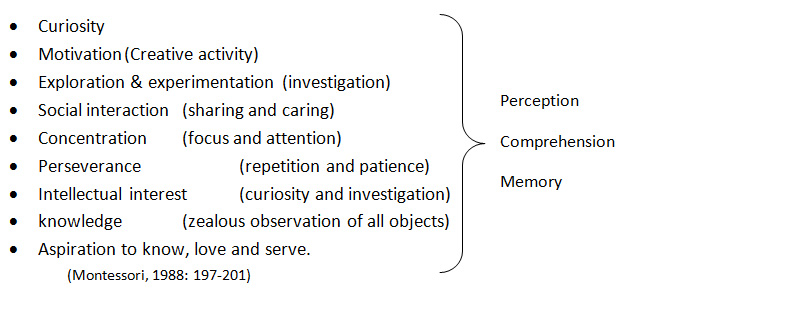
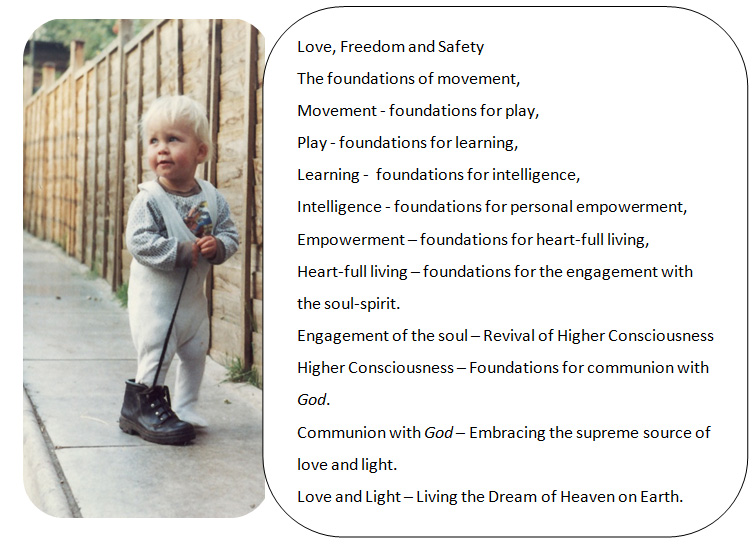
Montessori considered that the children found independence through organised learning. She wrote: ‘Without concentration it is the objects about him which possess the child.....But once his attention has focused, he becomes his own master and can exert control over his world.’ She perceived that following the development of concentration comes perseveranceand repetition which consolidate the child’s ‘ability to carry through what he has begun.’ (Montessori,1988:197-198.)
Both Montessori and Steiner encourage that boundaries should be presented in a way that is perceived as helpful to all rather than disciplinary action focused on a specific individual and/or their chosen activity.
Montessori suggests that it is important the adults do not generally (apart from exceptionally disruptive behaviour) interfere at this early stage of social development when the child’s freedom can be directed by the adult’s careful preparation and organisation of the environment. She also presents that it is important not to have too many things in the classroom and only one specimen of each object because this guides each child to respect the work of others, to wait his turn, integrates the social life of the class and develops important social qualities. Both Steiner and Montessori considered mixed gender and a mixed age range is beneficial to young children because the older children feel a desire to help and protect the younger ones and the younger ones admire the older children, thus the class becomes a group ’cemented by affection’ and the ’atmosphere of protection and admiration’ inspires the children ‘to come to know one another’s characters and to have reciprocal feeling for each other’s worth.’ (Montessori, 1988:206)
Steiner emphasizes the balance in teaching, which is listening and watching (that which comes inward from the outside) and the autonomous activities of doing(that which is anoutward expression from within).(Steiner,1982:35) The Steiner curriculum is predominantly one of music, narrated stories and poetry, theatrical arts, movement, painting and colourful art and crafts, all of which is directly related to the natural world and expressed through the child’s own creativity and imagination. Unresolved issues around the style of presentation and suitability of content presented in picture and story books, TV programmes, and computers games for young children (0-7years) could be described as follows:-
Can the young child distinguish between fantasy and reality within the presentation of an imaginative fairy story? Is the young child’s thinking capacity predominantly influenced by visualisation or language? How does the quality of presentation, i.e. personal presentation/ performances, read from a book, or watched on a screen, influence the child’s ability to appropriately interpret dramatic presentations of imaginative Story and Drama in relation to their own reality? How is the young child’s interpretation of what is real influenced by their own sensory experiences and their ability to identify the abstract qualities of fantasy through either a linguistic or visual media? How does the influence of fantasy relate to the young child’s knowledge of reality and internal social development? What subtle influences of mood, body language, presentation, and social context etc. affect the context within which a child accommodates presentations of fantasy and drama? What influence does our own personal attitude and disposition have on the young child’s reception of an imaginative presentation? Is it the language, the visual information or the energy within the presentation that dominates the influences upon the Child? How is the experience different for the child when media presentation and toy manufacture excludes an inter-personal presentation/sharing, and/or invitation to engage in interactive imaginative and creative play? D. Sloan describes his concerns as follows .....‘- through television, movies, literalistic picture books, detailed toys that leave nothing to the child’s own imaginative powers – children are made increasingly vulnerable to having their minds and feelings filled with ready-made, supplied images - other people’s images.....’ (Steiner, 1988:Forward)
Steiner presented that natural and undefined materials enhance free flowing creativity and give wide experiences and extensive opportunity for personal expression and intuitive exploration; thus expanding the learning experience beyond that which would have been gained by learning to perform a pre-structured activity and engage in consciously organized intellectual thinking.
Aesthetic and artistic experiences appear to be strongly influenced by the social aspects of music making, singing and live storytelling and associated theatrical presentation. Steiner suggests there is minimal need for correction at this age because the children’s own desires will facilitate assessment of results and aesthetic rhythms of routine, order and tidiness.
The Steiner kindergarten adults focus is on providing a natural and aesthetically pleasing environment with a joyful and child centred homely approach, where preconceived goals, plans, gains and ideas are secondary to the primary whole hearted celebration of creative living and spontaneous doing; where control of error has no place beyond practical applications related to the process of play, and learning is a wholly organic process in which ‘soul currents and bodily happenings interact’.(Steiner,1982:34) Aesthetic and artistic experiences are strongly influenced by the social aspects of music making, singing and live storytelling and associated theatrical presentation. Natural and undefined materials enhance free flowing creativity and give wide experiences and extensive opportunity for personal expression and intuitive exploration; thus expanding the learning experience beyond that which would have been gained by learning to perform a pre-structured activity and engagement in consciously organized intellectual thinking. In contrast to Montessori, Steiner appears to suggest that it is important that children are not encouraged to develop consciously organized strategies for intellectual thinking until after they start to lose their milk teeth in the seventh year. Steiner kindergarten adults focus on providing a natural and aesthetically pleasing environment with a joyful and child centred approach, where preconceived goals, plans, gains and ideas are secondary to the primary whole hearted celebration of creative living and spontaneous doing; where control of error has no place beyond practical applications related to the process of play, and learning is a ‘wholly organic’ process in which ‘soul currents and bodily happenings interact’ (Steiner,1982:34) The Steiner curriculum for children over seven years places importance on the consolidation of learning that is established after the child has had a night’s sleep. Initially a specific lesson content is presented/illustrated by the adult to the class. One or more days later the adult presents the same lesson content within activities where by the children gain their own experience of the content previously illustrated. Finally, on a subsequent occasion, the lesson content is presented in a way that facilitates that the children can engage in their own personal creative expression, exploration and experimentation.
Montessori considered that the adults’ organisation of the classroom aids the child’s life and natural growth’. (LMC,1982:41) The young child’s willpower is motivated by what he wants and he uses his intelligence to organise according to his capabilities and the prompting of natural laws (rhythm) to formulate his interaction with the environment. (Montessori,1988:199). She presents that the children should be free to move about and express themselves spontaneously within the classroom throughout the day, and that this helps the children learn ‘active discipline’ through their own inner mastery of themselves. The adult’s only role of restraint would simply be to compassionately direct the activity so as to avoid disruptive actions that would offend, hurt, damage or disturb. She calls the adult the directress. However, this does not imply that she wishes the children to copy her actions or that she is there to correct a child if he does something wrong. Her methods emphasize the importance of imitation for the child during the early years. Unlike copying, imitation intrinsically involves the child’s desire to initiate a sensory experience, ‘enacted in deep earnest by the child in its play’. (Steiner,1988:80)
Montessori suggests that unity of the soul and body is expressed through ‘voluntary effort under the conscious direction of the mind‘, which emanates as a ‘perfection that is individual and personal‘.(Standing,1962:212) Montessori describes the first stage of development as the phenomenon of concentration.
‘Without concentration it is the objects about him which possess the child. He feels the call of each, and goes from one to another. But once his attention has been focused, he becomes his own master and can exert control over his world.’ (Montessori, 1988:197)
Subsequent to the development of concentration is that of perseverance. The state of concentration now embraces repetition which consolidates the child’s ‘ability to carry through what he has begun.’ The young child’s willpower is motivated by what he wants and he uses his intelligence to interaction with the environment according to his capabilities and the structural laws of physics. ‘But the child does not act from logic, he acts by nature.’Within an environment that provides the child with the freedom to follow his own inner forces, the child will focus his attention not on things themselves, but on ‘the knowledge he derives from them.’ (Montessori, 1988:198-199)The child wants to gain an understanding of how things work. He is seeking an intellectual form of knowledge.
‘If the adult presents her actions too forcibly she will attract the child’s attention to herself and not the action, the child then might copy ‘unessential peculiarities’ associated with unconsciously motivated impersonation. ‘(Standing,1962:218)
Montessori classroom organisation generally supports an emphasis on children working individually. The appropriateness of this approach would appear to be supported by Piaget in the following quote: ‘observation shows that up to a certain age, between 5 and 7 1/2, children generally prefer to work individually rather than in groups even of two.’ (1926:6) The Steiner classroom organisation presents a greater emphasis on social integration through informal group activities and rhythmic routines. Steiner proposes that at this time the young child should be encouraged to retain the dream like, fairytale disposition. He suggests adults should cherish the ‘magic remedy’: ‘reverence, enthusiasm and a sense of guardianship’ together with an outward manifestation of the adult’s nature. (Steiner,1982:30)
Montessori considered that a unity of the soul and body is expressed through ‘voluntary effort under the conscious direction of the mind‘, which emanates as a ‘perfection that is individual and personal‘.(Standing,1962:212)
The Sensitive Periods
Montessori methods are based on her belief that during the period 0-7 years children have critical learning periods that initiate learning behaviour. These ‘sensitive periods’ when the child shows a heightened vitality and pleasure are essential to normal development, and if the child is denied appropriate environmental stimulation, he will suffer limitations in his intellectual growth. (Montessori,1966&1988;L.M.C.,1982)Montessori describes these periods as: order, senses, language, walking, small objects and social aspects of life. (Montessori,1966:41;L.M.C,1982:13-14).The Montessori classroom provides a structured approach to learning with specially designed concrete didactic (intending to teach) apparatus for detailed sensory discrimination of size, shape, colour and shade, smell, sounds and musical tones and semi-tones which includes a structural control of error. (L.M.C,1982;Montessori,1967:100-103)
The following section describes in greater detail each of Montessori’s ‘sensitive periods’ with some further comments describing related aspects from Steiner’s perspective.
Steiner and Montessori appear to agree that the early years (up to Seven years) are predominantly involved with the development of sensory reception, perception and assimilation. During the first three years the child focuses on exploration in order to gain highly detailed sensory information and thereby develop knowledge understanding of their environment. Steiner presents that during the first three years, the child is learning to ‘walk, speak, and think ‘ and ‘to a large extent, the foundations are being laid for a person’s whole or in our life and configuration .’ (Steiner,1988a30&44)
Montessori methods are based on her belief that during the period 0-7years children have critical learning periods that initiate learning behaviour. These ‘sensitive periods’ when the child shows a heightened vitality and pleasure are essential to normal development, and if the child is denied appropriate environmental stimulation, he will suffer limitations in his intellectual growth. (Montessori,1966&1988;L.M.C.,1982) Montessori describes these periods as: order, senses, language, walking, small objects and social aspects of life. (Montessori,1966:41;L.M.C,1982:13-14).The Montessori classroom provides a structured approach to learning with specially designed concrete didactic (intending to teach) apparatus for detailed sensory discrimination of size, shape, colour and shade, smell, sounds and musical tones and semi-tones which includes a structural control of error. (L.M.C,1982;Montessori,1967:100-103)
The following section describes in greater detail each of Montessori’s ‘sensitive periods’ with some further comments describing related aspects from Steiner’s perspective.
ORDER(1st- 4th year);-
‘The law of nature is order and when order comes of itself, we know that we have re- entered the order of the universe.’ (Montessori,1998:261)
Order in the child’s external environment helps him to ‘categorise his perceptions and to make sense of the world‘. (L.M.C.1982:14) This period is particularly evident when the child has a passionate interest in the order of things both in time and space and learns to move objects from one place to another. He may at this time develop strong attachments for specific aspects of order. (Riley,2003)This sensitive periods last for about two years and is most prominent during the child’s third year, when the child has a passionate interest in the order things both in time and space. This brings him into a ‘ritualistic’ positivity and seemingly ‘tyrannous’ levels of protest, when the accustomed routine or order is (from a child’s point of view) meaningless altered. Montessori describes the young child’s need for order and stability as a genuine necessity because he is ‘constructing himself out of the elements of the environment ‘...... ‘the child ‘is striving incessantly to bring this bewildering universe, as he knows it, into some sort of order. No wonder it upsets him when that minimum of order which he has discovered becomes destroyed.’(Standing, 1962:126)
The children’s choice of activities within the Montessori classroom is organically regulated by the emphasis on the child’s responsibility to return apparatus to its correct place. The storage of each item is presented in a structurally correct manner and even the youngest children can quickly discern the appropriateness of what they choose from the wide range of equipment and materials available within the classroom. This also encourages each child to make a reasonable and suitable commitment to the choice of activity through associated standards of tidiness.
Steiner presents that the young child’s relationship to a sense of order is met by the organisation of rhythm, repetition and daily routines within the kindergarten.
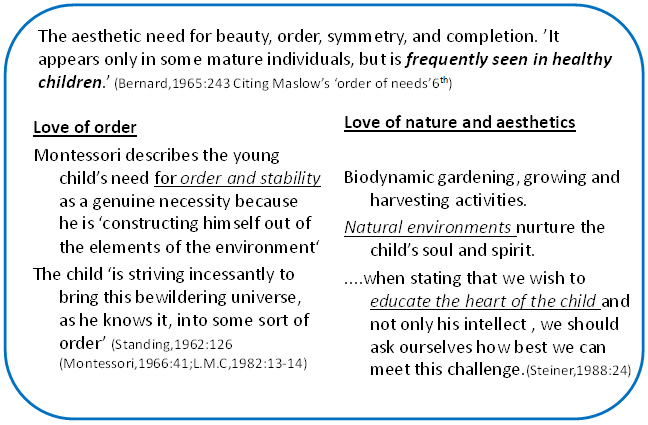
SENSES (1st - 9th year)
During the early years the child subconsciously selects how he responds to environmental stimulation associated with hearing, seeing, touching, tasting and smelling. Montessori methods place a particular emphasis upon the importance of training the child to refine, improve, and make sense of sensory perception and discrimination. The Montessori didactic (intending to teach) apparatus promotes sensory-motor activities which develop skills of differentiation within each of the five senses, imprinting thought upon the brain through ‘sense-perceptible eurhythmy’. (Steiner,1982:41)
Steiner presents that before the change of teeth the young child is ‘essentially an ensouled sense organ entirely given over in a bodily religious way to what comes towards it from the surrounding world’and that sensory experience ’permeates the child’s entire organism.’ He suggests that whatever is happening in the child’s environment is wholly and subconsciously received by his senses and thereby also affects his soul and spiritual development.(Steiner,1988:75,40)Steiner schools today present that watching television does not meet the sensorial needs of the young child and, furthermore, prevents the young child from receiving what he needs in order to have his physiological needs met appropriately. Steiner emphasises the need to learn through movement and multi-sensory experience; watching TV does not involve any body movement and presents an unnatural dominance of visual stimulus, much of which may not have any personal meaning within the child’s own reality. Similarly how is the experience different for the child when media presentation and toy manufacture excludes an inter-personal presentation/sharing, and/or invitation to engage in interactive imaginative and creative play? D. Sloan describes his concerns as follows .....‘- through television, movies, literalistic picture books, detailed toys that leave nothing to the child’s own imaginative powers – children are made increasingly vulnerable to having their minds and feelings filled with ready-made, supplied images - other people’s images.....’ (Steiner, 1988:Forward)
- Childs (1991) cites Steiner’s presentation that -
‘The human being is citizen of three worlds. Through his body he belongs to the world which he also perceives through his body; through his soul he constructs for himself his own world; through his spirit a world reveals itself to him which is exulted above those by others.’
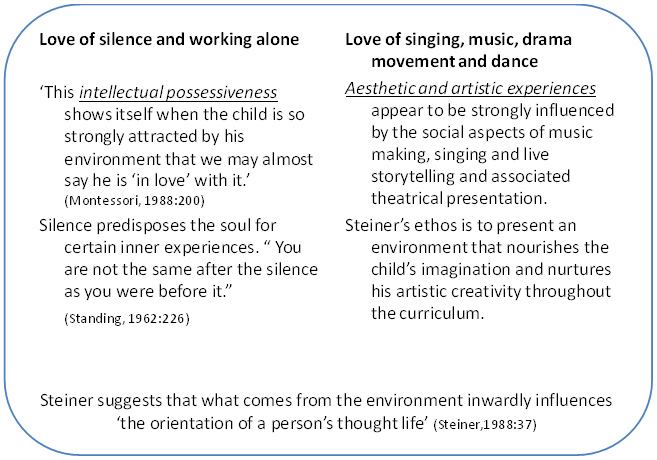
SMALL OBJECTS (2nd – 5th year)
This period is illustrated by the child’s urge to use his five primary senses to discover in great detail information about his environment. During this period the child examines small objects or specific small parts of an object and thus he develops his sensory knowledge and detailed awareness and understanding of his world.
Montessori and Steiner both describe the young child’s intense curiosity in detailed aspects of the natural world, music and communication.
WALKING (2nd -5th)
Montessori describes walking as a skill that needs practice and when self-motivated the child has high levels of stamina and endurance.
Steiner describes how learning to walk helps the child establish its ‘equilibrium with the physical world surrounding it’. When learning to walk the young child is seeking physical balance, but when movement of the arms and hands can be independently organized from the legs and feet a child learns to experience ‘the principles of statistics’ and the ‘dynamics in one’s own inner being’.
‘Through the fact that the movements of arms and hands have become emancipated from those of the legs and feet, something else has happened. A basis has been created for attaining a purely human development.’
Steiner goes on to describe that
‘.....speech has to be developed on the basis of the right kind of walking and of the free movement of the arms...... the beat-like, rhythmical element of the moving legs works upon the more musical-thematic and inward element of the moving arms and hands.’ (Steiner,1988:31-32)
He also equates the faculty of autonomous movement with the consequential development of language and thinking, and this he suggests facilitates the foundations for good speech and language development. This association between walking and speaking through the body’s rhythmic system is the foundation to Steiner’s development of eurhythmy.
LANGUAGE(Birth to 5th year)
During the first five years the child develops a basic level of language competence. Steiner presents that learning to walk initiates a child’s faculty of speech and from the faculty of speech the ‘new faculty of thinking is gradually born’. He also suggests that the language experiences the young child receives from his environment are deeply and unconditionally received; and affect all aspects of his inner state of being. A child energetically receives everything that is presented verbally, emotionally and spiritually from the outside environment.(Steiner,1988a:49-50)
Montessori presents that the language skills acquired during this sensitive period for language are significantly important for all further language development.When illustrating the use of a specific piece of sensorial apparatus Montessori recommends that adults use the ‘Three Period Lesson’ presented by Eduoard Seguin.
1st Period: The vocabulary that is specifically presented by or associated with the apparatus.
2nd Period: The child is asked to use the apparatus to indicate the meaning of the vocabulary that the sensorial apparatus illustrates.
3rd Period: The child is asked to provide the language that describes the information presented within the sensorial apparatus.(LMC,1982:43)
Montessori presents that the language skills acquired during this sensitive period are significantly important for all further language development and competence. Steiner presents that the rhythmic movements of walking enhance the development of speech and from the faculty of speech, the ‘new faculty of thinking is gradually born’. (Steiner,1988:49) They both suggest that the language experiences the child receives from his environment are deeply and unconditionally received and affect all aspects of his inner state of being. A child energetically receives everything that is presented verbally, emotionally and spiritually from the outside environment.
Steiner schools place a strong emphasis on story-telling and live music making - books, TVs and computers are not considered appropriate in the Kindergarten classes. There are many unresolved issues related to our knowledge and understanding of how the medium, style and quality of presentation influences the child’s ability to appropriately distinguish between real and fantasy.
The greatest disagreement between the Montessori and Steiner methods appears to be focused on when to teach the children to read and write.
Steiner presents that children should not be taught to read or write before they start to lose their milk teeth for to do so would lead the child into ‘abstractions prematurely’ and ‘hardening’ of his natural human nature. Then he suggests that the letter shapes should evolve from painting and drawing and thereby remain ‘something more concrete than reading’. (Steiner,1988:85-86)
Montessori presents that children in their fifth year found for themselves a new language, a visual system of written symbols which provided an effective form of language communication. Montessori found that the children’s spontaneous desire to learn how to write came several months before they went on to learn to read. Montessori discovered that it was the children who had the opportunity of learning the shapes of the individual letters by feeling them and knew their corresponding phonetic sounds, who moved with dramatic suddenness into writing. Montessori designed carefully structured sensorial materials to illustrate and facilitate phonic word building and simple whole word recognition. Both Montessori and Steiner advocate that learning to write precedes reading through a combination of different methods, and that literacy skills should emanate from a child initiated desire and child centred approach to learning.
SOCIAL ASPECTS (4th – 7th year)
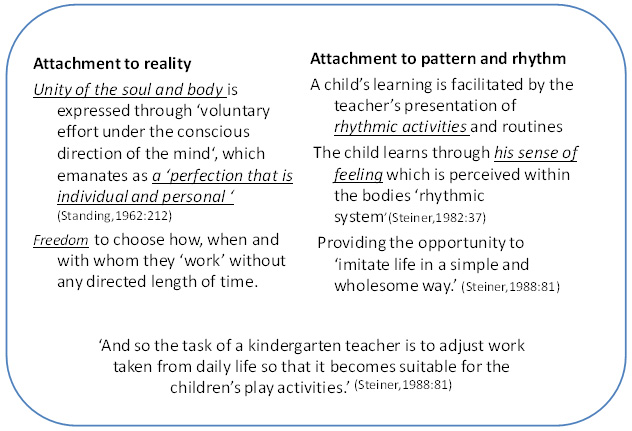
In contrast to the first three years when the child’s whole body is deeply influenced by all the sensory experiences presented within his surrounding environment. Montessori and Steiner both suggest that during the first three years the child is impulsive and generally not emotionally or socially influenced by his external environment. This sensitive periods of social development starts around the age of three when the child becomes aware of their independence and their choice to cooperate with others. Montessori suggests this ‘is not instilled by instruction, that it comes about spontaneously and is directed by an unconscious power’(L.M.C.: 1982:15)and thereby ‘following the method of nature’.(Standing, 1962:218)The child follows an inner impulse while ‘guided by his inner need’. Montessori and Steiner consider imitation to be a predominant aspect of early learning when it is inspired by the child’s own initiative,to give up his natural child related response, in orderto imitate the adult disposition; to gain personal experience of that which is activity illustrated by another person.Montessori calls the adult the directress, however, this does not imply that she wishes the children to dogmatically copy her actions or that she is there to correct the child if he does something ‘wrong’. The Montessori adult provides guidance and suggestions only when the child is unsettled or specifically asks for help. The adult respectfully, calmly and patiently provides the child with the required help by example, so that her presence does not cause the child to lose contact with his own motivation, self direction movements and experience. Information, illustrations, and guidance are presented to the child in small consecutive steps.
Montessori and Steiner describe the classroom as a community where the children cooperate for the ‘honour of their community’, each doing his part without hope of reward with a ‘sense of solidarity not instilled by instruction completely extraneous of any form of emulation, competition or personal advantage, a gift of nature.’(Montessori,1998:213& 130)
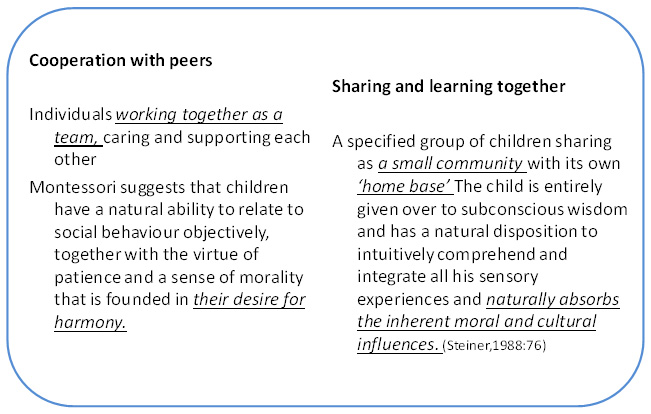
Both describe the importance of organically motivated Imitation---routine tidiness,--gentle atmosphere—kind motherly interpersonal relationship between adults and children. Approaches to antisocial and or disruptive behaviour are based on motherly intimacy, informal styles of sharing which are non invasive, non judgmental, gentle and kind with an emphasis on by example.They suggest there is no need for correction at this age because the children’s own desires and aesthetic rhythms of routine, order and tidiness will facilitate assessment of results and inner disciplines. Mutual appreciation and respectbetween adult and children helps the children find independence and obedience through organised learning.Both present that the child under the age of Severn does not distinguish between good and evil and small children should not be ‘confronted with such problems he accepts and believes everything, the only evil that he can imagine is naughtiness which is defined externally by adults who identify the behaviour as unacceptable for reasons which are usually beyond the child’s own inner comprehension. Children have at this age an inner sensitivity that initiates their spiritual senses that guide his whole being and initiate, when moved by these inner feelings, simple natural sharing of kindliness and compassion.
They also present that during this sensitive period all socially related language perceived by the child from his environment is inwardly felt, and thereby affects the whole life of such a child, and later turns towards the outer world through his own language.
Montessori describes the adults’ role as keeper and custodian of the environment offering an invitation to learn. The adult holds a spiritual relationship with the children and through this she serves their needs and keeps them company in their learning. She must be careful not to interrupt when the children are engaging with concentration. Group activities in the Montessori classroom are optional when directed by the adult, and spontaneous when created by the children’s own activities and shared interests.
‘If the teacher meets the needs of the group of children entrusted to her, she will see the qualities of social life burst surprisingly into flower, and will have the joy of watching these manifestations of the childish soul.’ (Montessori,1998:257 )
Both Steiner and Montessori describe the young child’s ability to ‘transcend the senses’ (Montessori1967:296) and lovingly embrace a soul based spirituality associated with concepts of God the Father, sacred occasions and places of worship suggesting that children acquire, almost imperceivably, a knowledge of religious things. Both present that the child under the age of seven does not distinguish between good and evil and his own experiences of childhood naughtiness may be burdened with unfair and oppressive judgments, if adults are not mindful of the child’s innocent and highly receptive disposition.
Steiner and Montessori pedagogy appears to predominantly be in agreement with most of the basic issues of early childhood learning and the heart-full simplicity with which children embrace their natural affinity with joy, love and spirituality expressed as a love of:-
- Free play,
Steiner presents that it is the enactment of the child’s will rather than intellect that formulates the child’s early passionate enthusiasm for learning....‘The child wants to be active simply out of an inborn and natural impulse. Play activity streams outward from within.’(Steiner, 1988:80)
- Working together, Bernard when citing Maslow presents that ‘...when pupils feel that they are part of a group, desirable and purposeful learning activities are facilitated.’ (Bernard,1965:248)
Creativity and beauty
However, the Steiner and Montessori styles of environmental care and support appear to be weighted from different perspectives. Steiner appears to emphasize the abstract aspects of creativity and communication. Montessori appears to emphasize reality and sensory discernment of the concrete and a more structured approach to learning activities.
| CONCRETE | ABSTRACT |
| Consciously organized | Subconsciously organized |
| Voluntary actions | Involuntary responses |
| Exploration, creativity, planning, problem solving | Intuitive, spontaneous, impulsive, imaginative |
| Self-discipline ‘plan, do, review’ High Scope | Cultural and Social discipline |
| Kinaesthetic sensory experience Sensory Perceptual development through the senses | Absorbing the environmental surroundings Whole- body perception through the rhythmic system |
| Predominantly auditory and visual awareness facilitating ‘Cognitive’ organisation of all sensory information | Aesthetic and feeling based awareness facilitating ‘Conceptual’ understanding. |
| ‘Pretend’ play: imaginative creativity based on real possibilities: role play e.g. driving a fire engine, feeding the baby or re-enactment of experiences e.g. Having a bath, being in a boat, doing the sweeping. | Fantasy play: imaginative creativity incorporating impossible scenarios, fairies, unicorns, impossible solutions – ‘the dog jumped over the house’. |
[Conceptual understanding - a general notion, thought, opinion or idea about a state of being.Cognitive understanding - the faculty of knowing or perceiving the natural relationship associated with origin.]
Steiner presents that ‘up to the seventh year the child is permeated on the whole more by sculptural’ (all that is seen – visual/visualised) ‘and less by musical forces’ (Steiner,1982:19) (all that is heard/felt). During these years the sculptural concrete element works together with the abstract music and speech elements united through the ensouled spirit of the child.
Montessori suggests that unity of the soul and body is expressed through ‘voluntary effort under the conscious direction of the mind‘
If learning involves the reception, organisation and integration of concrete and abstract environmental experiences, then the concrete and abstract nature of the environment can be explored in relation to learning and ‘Balance in Teaching’ (Steiner,1982) can be addressed.Such that the abstract can be expressed and the concrete can be felt. With the freedom to follow his own inner forces, the child will focus his attention not on things themselves, but on ‘the knowledge he derives from them.......the child does not act from logic, he acts by nature.’ (Montessori, 1988:199)
| Abstract. | Learning. | Concrete. |
| External physical interaction (experiential activity) | Consequential action | |
| Social interaction | Internal disposition (Personality) | Subtle awareness |
| Spontaneous interaction | state of being (individuality) | Acquiring Independence |
| Movement and creativity | attention and concentration (Worldly interaction) | Doing and Thinking |
| The rhythmic system -intuitive feelings | Internal neurological activity | Sensory-motor discernment- Integration of the senses |
| Patterns and possibilities | Intrinsic physiology | Structure and information |
| Passion and improvisation | Focus of attention and quality of engagement | Practise and purpose |
| Symbols and sounds | memory | Visual imagery and patterns |
| Imagination, intonation and verbalised expression of thoughts | Language and communication | Body language, sign language, facial expressions and the mechanics of speech production |
| Aesthetic appreciation | Personal Disposition | Emotional response |
| Creativity through arts and crafts- fine motor control | Understanding cause and effect- knowledge | |
| Conceptual appreciation | Cognitive differentiation | |
| The journey of development, rhythms of change | Detail and differences, parts to make a whole | |
| Celebration and the development of social competence and cultural appreciation. | Motivational Disposition | Personal responsibility for the development of academic skills ( e.g. Literacy and numeracy) |
| Expression through the arts, language and music. | Scientific exploration, application to task related apparatus, method and results. | |
| Authenticity and intuition | Concentration and focus | |
| Social competence | Self esteem | |
| Spiritual awareness | Development of skills |
If the creative element of intelligence involves something beyond that which has been experienced and thereby incorporates a union of real (concrete - perceived through the body senses) and imaginary (abstract - beyond what is at present directly or indirectly experienced), one might present that authentic creativity has to include an element of inventive inspiration. Steiner appears to emphasize this development during the 3-7 years, whereas Montessori appears to emphasize the acquisition of knowledge based on sensory differentiation within the real environment.
In the example below the author illustrates how the language associated with a classroom activity, such as, a short story, can give a different weight of emphasis upon the elements of Real(physical, mental and emotional experience)
Pretend(re-enactment of physical, mental and emotional experience)
Fantasy (communication of thoughts and representational actions beyond structural physical, mental and emotional experience)
Oncea little bird fell out of his nest and was very sad. He was crying, when a little fairy called Melodycarefullypicked him up. She flewright up into the tree branches and put the little bird back into his nest.
One morning Peter was having a lovely time playing in the mud at the back of the garden. Later that day his mum went outside to hang the washing on the linebut she could not find the pegs anywhere. She was just about to call Peter for help when she noticeda very strange bush sticking out of the mud in the corner of the garden.This bush had grown pegsinstead of leaves; they were all different colours and sticking out in all directions.
This example illustrates how a Steiner style of emphasis might be on the fantasy element of imaginative play, and a Montessori style of the emphasis might be on the pretend element of imaginative play.
Steiner appears to emphasize the importance of creativity and imagination and their positive influence on the child’s overall development of intelligence. This is supported by evidence that illustrates notable qualities of intelligence illustrated by those with a creative disposition and a suitably supportive environment. Bernard identifies these special qualities as follows: fluent language and expression of ideas, flexible and adaptive, adventuresome, divergent and inventive thinking, good use of memory and application to new situations, humour and playfulness, openness to feelings, high levels of incentive and curiosity, tolerance and wisdom, nonconformity, strange and obscure ideas, drive to go beyond normal expectation, appreciation of theoretical and aesthetic qualities. (Steiner,1965:88)
Duffy (2006) goes describes creativity as something considerably more than imagination and her definition includes: relating past learning to new situations, non-traditional approaches to problem solving, thinking beyond the information given, connecting and rearranging information from different sources, originality and adaptability.
‘Through a curriculum rich in creative and imaginative opportunities young children have the opportunity to develop skills, attitudes and knowledge that will benefit all areas of their learning and development.’
Duffy also suggests that creativity and imagination are not something that can be taught or measured because it comes ‘from the human ability to play’ (Duffy,2006:12-13) and it should be viewed as a long-term involvement throughout life.
Bernard cites Piaget and suggests that prior to the age of 6-7 the child is ‘unable to maintain a simultaneous awareness of a whole and a part’ and his thinking is tied to his own physical activities and ‘simple forms of symbolic reference’. This Piaget calls the ‘Preoperational Stage’. Between the age of six and seven the child moves onto the next stage of thinking, ‘concrete operations’. This allows him to develop reasoning and thereby consider ‘the implications of actions without having to carry them out.’ The child now has an ability to mentally rehearse, imitate and imaginatively represent external situations within the mind.(Bernard,1965:88)
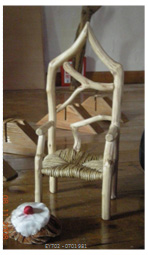
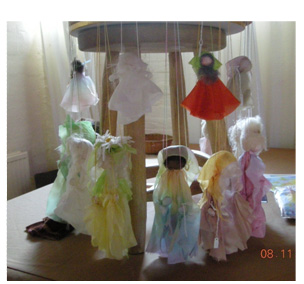
Piaget’s theory appears to support Steiner‘s philosophy which, during the kindergarten years 3-7, avoids teaching methods and curriculum that require concrete operational thinking and reasoning skills. In keeping with Piaget’s theory the Steiner curriculum after the age of seven changes to a more formal topic based style that embraces and encourages a more structured approach. Steiner encourages class adults to integrate the spontaneous creativity of the preoperational stage with the development of concrete operational thinking, and reasoning. At this age Steiner’s pedagogy emphasises the more concrete aspects of learning, and thereby illustrates a large degree of agreement and compatibility with the Montessori project approach to education at this later age.
The author has summarised the two philosophies as:-
Steiner: The crucial nature of the child’s early years is that the body, soul and spirit are in complete unity. The natural rhythms and sensorial experiences from suitably child appropriate daily life provide simple and wholesome real life experiences for the young child’s ‘sense directed’ desire to imitate. Inner spiritual forces facilitate that the child’s imitative responses include ‘artistic impulses’ and allow the child to respond in an entirely individual way, unfolding its own soul activity. ‘The art of education must proceed from life itself and not from abstract scientific thought’ (Steiner, 1988:5) and we must protect the child from being absorbed too strongly or too rapidly into the outer world and the influences of intellectual education.(Steiner,1982:29,46,47;1988:24;Childs,1991:67)Steiner emphasizes the balance in teaching, which is listening and watching (that which comes inward from the outside) and the autonomous activities of doing(that which isoutward expression from within). It is the enactment of the child’s will rather than intellect that formulates the child’s early learning. Steiner describes children’s learning as a ‘whole organic process, in which soul currents and bodily happenings interact’. (Steiner,1982:34) Steiner pedagogy is facilitated through the personality of the adult. Child’s describes Steiner’s ethos as ‘Imbue thyself with the power of imagination’.... ‘Have courage for the truth’..and.... ‘Sharpen thy feeling for responsibility of soul.’ (Childs,1995: 61)
Montessori: Freedom to play within a structured environment through which the child will discover the joy of work. (L.M.C.1982:25; Standing,1962:42;Montessori,1966:193-198) The Montessori classroom emphasizes the practical aspects of living and doing. Within an environment that provides the child with the freedom to follow his own inner forces, the child will focus his attention not on things themselves, but on ‘the knowledge he derives from them...... But the child does not act from logic, he acts by nature.’ (Montessori, 1988:199) She presents that each child has cycles of activity that should be allowed to be worked through and completed without interruption, and in this way the child truly learns according to his own individual needs and capabilities. When the environment provides a scaffolding (Roopnarin&Johnson,1987:374) for consciously organized sensory differentiation and discernment it creates a platform for the child’s development of awareness and organisation of knowledge and understanding. Montessori suggests that between the ages of three and six successful completion of tasks will normalise a child’s powers of concentration, intelligence and self-discipline. (Montessori,1988:182,188,243)
Independence and initiative: Play is a child’s ‘work’Montessori emphasized the concrete aspects of living and doing. She provided specialized concrete didactic apparatus with a structural control of error. This equipment encouraged detailed sensory discrimination of size, shape, colour and shade, smell, sounds, musical tones and semi-tones.
The child’s freedom can be directed by the adult’s careful preparation and organisation of the environment.
Play is a natural inborn impulse: Steiner Kindergartens provides natural and undefined materials which are considered supportive to free play and natural flowing creativity.
That gives wide experiences and extensive opportunity for personal expression and intuitive exploration; thus expanding the learning experience beyond that which would have been gained by learning to perform a pre-structured activity and engage in consciously organized intellectual thinking. The adult organises the children’s participation in music, craft and cooking activities on a daily basis.
Comparing Steiner and Montessori Philosophy the chart below summarises differences:-
| Steiner | Montessori |
| 3-7 years should be taught as a family group | 3-7 years should be taught as a mixed age group |
| Play is a natural inborn impulse | Play is a child’s ‘work’ |
| Natural environments nurture the child’s soul and spirit | The child finds independence through organised learning |
| The child learns through his sense of feeling which is perceived within the bodies ‘rhythmic system’ | Child directed learning with maximum freedom of choice for each individual child |
| A child’s learning is facilitated by the adults presentation of rhythmic activities and routines | The child’s learning is facilitated by the adults presentation through example and specific illustration |
| Social play and being part of a group, to whom different activities are presented within a familiar environment and routine | Freedom to choose how, when and with whom they ‘work’ without any directed length of time. |
| Mutual admiration and respect for the guardianship role of the adult | Mutual appreciation and respect between adult and children |
| Looking to the adult for information, guidance, instruction and boundaries | Confidence to ask the adult or others for information, help and guidance |
| Children enjoy a wide variety of opportunities for interactive play and group participation | Children enjoy working alone on their individual mats and learning specified skills. |
| A specified group of children sharing as a small community with its own ‘home base’ | Individuals working together as a team caring and supporting each other |
| Mastery through child initiated imitation and rhythmic repetition | Mastery through focus , concentration and repetition |
| feeling through sensorial experience | Sensorial experience through doing |
| Joyful activity | Experiential experiences |
| Fantasy and creative expression | Discovery and application to tasks |
| Passion and aesthetic appreciation | Knowledge and understanding of the physical world |
| Exploration and experimentation | Enquiry and purposeful activity |
When the education environment is focused on child-directed learning the child himself has the opportunity to balance the elements of freedom and self-discipline, abstract and concrete, autonomous and group learning.
Development ofAssimilation and Accommodation
-learning through environmental stimulus
The following four consecutive stages are established during childhood development:-
- Sensory stimulus- assimilation of sensory information presented by the environment to the physical sensory receptors.
- Concrete integrationof sensory information - physical multi-sensory enrichment acquired through child directed exploration and experimentation. Experiential experiences, constructional sensory-motor activity. Memory.
- Abstract thinking- conceptual understanding; feeling - energy, moods, disposition, attitude, willingness, desires, and recall.
- Creativity- imaginativeintegration of a, b, and c (sensory, concrete, and abstract) with authentic and unique aspect of personal individuality. The heart and soul connections that nurture, dreams, morals and beliefs, and initiate Spiritual experiences of reverence, compassion, gratitude and appreciation.
A four day experience of play and learning on a natural beach environment is described below as an example of the above theory in practise:-
Day one (a) Mobility - sensory exploration, assessment of environment, testing and establishing boundaries, knowledge of the environmental geography.
Day two (b)
Increasing the sensory experiences by physical efforts that initiate gross motor interaction.
For example running away from the waves; splashing, diving, sitting in the shallow waves; throwing sand, digging a hole, covering yourself or someone else burying them in the sand; playing chase games on the sand, or in the water, stamping on shells and worm castings, collecting seaweed or driftwood for a fire, collecting other items from shore line old rope containers etc.. Sensory experiences upgraded to a maximum, exploring environmental and social aspects of control and testing boundaries. Excitement and enthusiasm, over enthusiastic, attention seeking /challenging behaviour seeking/engineering stronger sensory stimulus, a strong sense of action and reaction.
Day three (c)
Relating to the environment through creative activity.
Sand structures building and decorating them sandcastle waterways and three dimensional structures serving a waves with the with or without the search for learning to swim playing catch on the beach and or in the sea constructing a sun shade tent or winter break from sticks and stones and hotel building is and village designing.
Day four (d) A day of relaxation, a heart felt accommodation of the previous three days experiences, recap and remembering , recall and meditation. Spiritual experiences of reverence, compassion, gratitude and appreciation.
Much of children’s play activity today is occupational rather than educational. Their activities are focussed on and/or dominated by the reception of sensory stimulus described above in (a). The child’s physical activity is either minimal or directly related to the repetition or prolonging of a specific sensory experience. Also we have such a highly stimulation environment much of a child’s day can be occupied by acclimatisation i.e. getting familiar with the environmental stimulus in ever changing environments. The child thereby gains a large amount of sensory input but little opportunity to actively explore in more detail the context and interrelated nature of their different sensory experiences. Because children by nature need to be physically active they establish a repertoire of occupational responses which provide opportunity to move within the context of prolonged strong sensory stimulation, e.g. the young child watching TV may suck a blanket or manipulate a cuddly toy, older children play on computer games that require fast repetitive button pushing movements. The author describes these predominantly receptive sensory occupations as entertainment. Entertainment here describes situations that hold a child’s focus in the first level of learning that of (a)
Some children may be suited to the more abstract imaginative and creative Steiner approach. Others may feel more at ease with the concrete and structured Montessori methods. However, all will hopefully receive a rich, gentle and nurturing physical environment that encourages child directed learning and natural child centred activity.
Children do not receive any specified educational help for learning to stand and walk, communicate and talk, feel and think. What then is the responsibility of the adult carer beyond that of providing a warm hearted, compassionate and appropriate guardianship over the child’s spontaneous and joyful desire to learn through play?
When the environment is focused on child directed learning - the child himself has the opportunity to balance the elements of: freedom and discipline, abstract and concrete, and autonomous and group learning.
The author feels the most influential aspect within educational care is the adult’s own inner feelings towards each individual child;‘The adults feelings are certainly the most important tools of education.’ (Steiner 1982:18)Maybe it is this, which Steiner and Montessori advocate so highlythat is the real issue related to the children’s positive learning experiences, rather than the teaching methods or the classroom environment,
Maria Montessori and Rudolf Steiner have used their own personal experience as adults to develop a pedagogy that addresses fundamental issues they (together with other pioneers in education) believe are paramount to children’s wellbeing, development and learning. The summary below describes what is thought to best facilitate children’s natural play and learning:-
- illustrate care, love and understanding
- leave a child undisturbed when he is engaged in concentrating on a chosen activity
- gives each child freedom to make his own plans, choices and decisions.
- illustrate by example how to do things, what different objects do, and what they are used for.
- provides a child friendly interesting learning environment.
- present difficult tasks broken down into small consequential, step by step actions
- gain a deep knowledge and understanding of the individual child’s personal qualities, passions, skills and temperament.
The Steiner describes and the three principal human virtues and as: willing gratitude; the will to love; the will to do one’s duty. The adult must add to this the matter of ‘knowing how to adapt oneself to the individuality of the growing child.’ And what content and to bring to their pupils in their various ages and stages.(Steiner,1988a:127) Steiner emphasizes ‘the balance in teaching’ which is a moment by moment relationship between the adult with the individuals and class is a whole, such that no amount of experience or knowledge of external pedagogy can create because the best teaching comes from spontaneous and compassionate authenticity . Steiner does not appear to present his pedagogy as an external and impersonal role model but rather he wishes to enhance the personality of the adult within a style and foundation framework that allows everyone to feel relaxed within their own unique personality and subsequent worldly interaction.
The Montessori methods appear to be based on ‘freedom within a structured environment’ within which Montessori presents that the child will discover the ‘joy of work’. She suggests that play and learning are the child’s work, and ‘that “normalisation” through work is most likely to succeed between the ages of three and six years. During this time it is suggested that successful completion of tasks will ‘normalise’ a child’s powers of concentration, intelligence and self-discipline during this early formative period (L.M.C.: 1982:25)Montessori seems to suggest the adults role is to organize an environment that facilitates natural learning through concrete multi sensory experience. And that carefully structured didactic apparatus and empowers the learner and encourages confidence that later supports child directed learning. That it is the adult’s role to teach through illustration rather than directing the child into copying the adult. Nothing the child does is considered wrong and the child is free to experiment within his learning environment, however, he must nevertheless learn appropriate care and behaviour that successfully accommodates that objects are normally used within the context of their designed purpose, positive social interactions (e.g.turn taking and sharing), and returning items to their ordered/tidy disposition at the end of the free-play period.
This controlled freedom provided by learning materials and apparatus helps the child develop self-discipline as well as: sharing, respectful interactions, and an ability to value and appreciate the different environments and their respective learning potential.(L.M.C.: 1982:30)
The adult’s ability to facilitate or obstruct the child’s Social and environmental wellbeing requires the ability to find a balance that maintains harmony and encourages personal empowerment for example :-
- Enrichment versus over-stimulation
- Inspiring versus overwhelming
- Encouragement versus superiority
- Illustrating creativity versus authentic creative interaction
- Sharing versus entertainment
- Copied learning versus co-operative learnin
- Sharing versus entertainment
- Illustrating creativity versus authentic creative interaction
- Encouragement versus superiority
- Inspiring versus overwhelming
The skills related to the above and a person’s ability to scaffold a child’s natural learning potential are directly related to a conscious understanding or intuitive perception of what Vygotsky describes as the child’s Zone of Proximal Development.
The Zone of Proximal Development ( ZPD)
Meadows (2006)cites Vygotsky’s description of the child’s Zone of Proximal Development (ZPD) which describes the area of learning potential between the lower level of what the child can already ‘do independently’ and the highest level of ‘what the child can do with such assistance i.e. demonstrations, prompts or leading questions.’ (Meadows,2006:309) Meadows (2006) also indicates that a ‘diagnosis of the ZPD is necessary both for a full assessment of the child’s abilities and for the optimum targeting of instruction.’ (Meadows,2006:308-9) Vygotsky suggests that good instruction: identifies ‘a certain minimal rightness of function’; spontaneously develops concepts that ‘confront a deficit of conscious and volitional control’; and accommodates the ‘social and cultural nature’ of the individual child.(Vygotsky,1986:188-189)
The lowest threshold at which the ZPD begins
- The Zone of Actual Development (ZAD)(MacNaughton,2004:334) Learning already established - present level of ability, strengths and weaknesses, established approaches to thinking and learning. The ‘social and cultural nature’ of the individual child’s development and corresponding ‘ripening functions’ that have not yet ‘fully matured’.(Vygotsky,1986:189)
- Previous Play Experience – free play with the materials in advance, direct or indirect association with others who are successfully illustrating a higher level of skill/ attainment. Hughes (1991) cites research by Sylva who found ‘the children who either played with the materials in advance or watched an adult solve the problem became more successful problem solvers’ and appeared to be more ‘highly motivated’ and persistent than those in the observation group ‘who either solved the problem immediately or simply gave up’. (Hughes,1991:186)
Utilisation of The Zone of Proximal Development
Lytton (1971)cites the work of torrents(1965) whose research illustrated that children in kindergarten and infant classes whose adults ‘expressed strong creative motivation’ improved more than the children with teaches who were more critical and controlling. (Lytton,1971:107) When engaged in teaching within the child’s ZPD the adult may consider the following in relation to ‘creative teaching’ (Williams,2003:111) and ‘good instruction’(Vygotsky,1986:188-189)
- Scaffolding- Williams(2003) cites Vygotsky and Bruner - ‘Scaffolding refers to the arrangement of activities through which the adult or the more expert peer assists the learner to achieve goals, which would otherwise be beyond him or her. Scaffolding is a flexible and child centred supportive strategy. ‘As the child masters new skills the adult is able gradually to remove the scaffolding.’ (Williams,2003:110) Meadows(2006)proposes that ‘an early history of good scaffolding... sets up... learners to become their own scaffolders.’(Meadows,2006:312)
- Joy - ‘helping children to experience joy in a commitment to learning’ within ‘a familiar environment’ relevant to the child’s previous knowledge, experience, understanding and ‘holistic nature of learning’, existing confidence and independence and his own way of thinking. (Williams,2003:111-112)
- Freedom - ’freedom of observation and of judgment exercised on behalf of purposes that are intrinsically worthwhile....... freedom of thought, desire, and purpose.’(Dewey,1938:69)
- Emphasis upon intelligent activity, ‘information processing’,(Meadows,2006:217) rather than the means to an end product. The ability to inhibit impulses; conceive the consequences of their actions; visualise the future. (Fisher,1990:139)
‘it is also essential that the new objects and events be related intellectually to those of earlier experiences’. The adult selects new experiences that have the potentiality of ‘stimulating new ways of observation and judgment’(Dewey,1938:90)
- The Act of Discovery(Bruner,1973:401)- curiosity and the ability to embrace the surprise phenomena (Bruner,1973: 209), flexible responses to environmental experiences, inventive activity, internal motivation to interact, investigate and persevere.
- Social and Cultural Experiences - ‘...reciprocal give and take, the adult taking but not being afraid also to give. The essential point is that the purpose grows and takes shape through the process of social intelligence.’ (Wood,1998:85)
- Decentering - ‘Decentering, which is a prerequisite for the formation of the operation, applies not only to a physical universe ......but also necessarily to an inter-personal and social universe.....’(Piaget,1969:95)Reversibility and reciprocity(Piaget,1969:159); sharing and division; symmetry; inversion; to undo.
- Discernment and Choice - intrinsic and extrinsic motives (Bruner,1973:406) and adult facilitated activities that provide useful connections and combinations, new perspectives and a quality of invention through organised discernment and choice. (Bruner,1973:210)
- Planning - identification of ‘essential information’, ‘processing capacity’, (Meadows,2006:129) material requirements and levels of ability.
- Principles of Classification - defining properties, inference of identity and relationship, categorisation, adaptive significance, equivalents, grouping etc. (Bruner,1973:219)
- Symbolic Representation - visual imagery, signs and symbols, gestures and body language, communication through movement or sign language.
- Utilising Information - inductive learning: organisation of diverse information, reversibility, alternation, probability, utilisation of formal coding systems, inference and proposition, equivalence, retrospective and prospective considerations and systematic organisation. (Bruner,1973:220-221)
- Communication of Knowledge - comprehension, ‘sensory-motor schemes lead to those new combinations and internalizations that finally make immediate comprehension possible in certain situations.’ (Piaget,1969:12)and action - ‘acting upon objects in space and time’; concepts and procedures(Wood,1998:17,13)
- Learning as a three period lesson.
This appears as part of the Steiner lessons and is organically incorporated within the following Steiner method: The first lesson-involves a multisensory presentation of information. The second lesson involves the opportunity to explore and personalise awareness through experiential experience. The third lesson provides opportunities for integration with previous learning and creative expression.
The London Montessori Centre quotes that Montessori advised that the “three period lesson” of Seguin should be used. This addresses how to present a relevant vocabulary of language in conjunction with a piece of sensorial apparatus. For example in the first period the child hears the new language and vocabulary which is provided in association with the concrete example presented by the apparatus. In the second period the new vocabulary is presented to the child who then uses the apparatus to indicate the meaning. In the third period the child is asked questions about the apparatus so that he can illustrate that he has internalised the new vocabulary and can use it appropriately. (L.M.C.: 1982:43)
- Humour and Playfulness(Bernard,1965:94)
Identification of the Upper level of ZPD
When assessing the child’s upper level the adult may consider the following in relation to cognitive learning, creative activity, child development and teaching approaches.
- Independence - self-directed learning, self-discipline, establishment of new skills – physical, intellectual and social.
- Maturity ‘When action is internalised to form thought.’(Wood,1998: 22)‘The syntheses of : thought processes, daydreaming, and reasoning. (Meadows,2006:308)Confidence and competence. (Bernard,1965:76)
- Original and adaptive ideas – unusualness, a progression beyond the obvious, novel ideas, remote associations, ‘Intelligence enabled or promoted creativity.’ (Meadows,2006:253-257) ‘Divergent and adventuresome’ disposition. (Bernard,1965:75)
- Multisensory integration - intellectual association and the creation of new experiences that are unique and individual. Maximum transferability of learning to new situations.Transformation of evidence (Bruner,1973:225,402)- the ability to formulate/ verify/ revise. (Bernard,1965:90)
- ‘Beyond the information given.’ - intentional learning, hypothesis and prediction, inventive behaviour, a conception of natural forces, analysis of critical attributes, contingency planning, endurance and perseverance, integration of abstractness and concreteness within a learning experience, organic recall from memory, conceptual thinking .(Bruner,1973)
- Differentiation between thoughts and reality - perceptions and beliefs.
- Flexibility - fruitful application of previous learning into new situations, adaptability and the ability to accommodate random, chaotic or haphazard external conditions. (Bruner,1973:22&222)
- Socially meaningful activity – interpersonal communication, expansion of consciousness, the social ability to accommodate ‘cultural constraints and cultural amplifiers’. (Meadows,2006:311) Social Projection within the context of everyday situations related to the child’s own experience and feelings. Young children ‘come naturally to reason about their own and other people’s ambitions, fears, thoughts and feelings and to construct theories about how and why others act as they do.........,’(Wood,1998:168)
- Identification of predictable patterns - ‘Intending to produce anticipated end results through his own actions’ the ability to ‘anticipate the impact.....’ (Wood,1998:21)
Occupational Versus Educational Activity
Our present extensive production of occupational toys sold in the high-street shops directs children’s play levels with pre-determined stimulus response activity and thereby encourages specified occupational play rather than child-directed learning. These occupational play activities are focussed on and/or dominated by the reception of sensory stimulus described above in (1). The child’s physical activity is either minimal or directly related to the repetition and/or prolonging of a specific sensory experience. Most manufactured toys present a specified range of appropriate play behaviour which is often specified by illustrative pictures and diagram. Imitative learning is emphasised and discovery learning and child-directed learning has minimal support.Man made environments can also be so highly stimulating that much of a child’s day can be occupied by sensory acclimatisation, i.e. getting familiar with the complexity of the intensely stimulating/changing environment. The child thereby gains a large amount of sensory input but little opportunity to actively explore in detail the context and interrelated nature of their different sensory experiences. Because children by nature need to be physically active they establish a repertoire of occupational responses, which provide opportunity to gain a sense of security within the context of prolonged strong sensory stimulation. For example the young child watching TV may suck a blanket or manipulate a cuddly toy, older children play on computer games that require fast repetitive button pushing movements. The author describes these predominantly receptive sensory occupations as entertainment. Entertainment here describes situations that hold a child’s focus in the first level of learning: sensory stimulus as above in (1)
Examples of entertainment are those activities that support an externally specified repertoire of active and/or passive responses to environmental stimulus:-
Television
Back ground TV, music or radio programmes
Repetitively reactive man-made toys and uniform building blocks which minimises the creative potential due to structural formality and pictures of predetermined designs.
Food stimulants (artificial colourings flavourings and preservatives, sugary sweets, chocolate, coffee and peppermint, alcohol.)
Over stimulating new and exciting environments that create abnormally high adrenalin levels for abnormally long periods.
Dominating adult speeds of activity and adult schedules.
Libertarianism, I can do anything I want, and you can do anything you want.
Rigid routines, a mechanical or theatrical style of response that excludes individuality and authenticity.
When the adult replaces a ‘I need to think about that ’ response with a ‘yes’, or the ‘I am sorry I can’t let you do that’ response with ‘it’s OK I’ll pretend it isn’t happening.’
When verbal communication overwhelms the child’s free expression and movements.
When physical punishment is so intense it dominates over the child’s self-directed play responses.
Adult initiated/motivated/enforced apprenticeship into clubs and classes, e.g. ballet or boxing. [Only when attendance is genuinely child motivated and appropriate to the child’s ability, personality, age and development, will the child develop the genuine engagement, empathy and interest related to meaningful learning.]
Adult entertainment: adult social events, cinema, theatre, dining out etc.
Child-directed Learning and Creativity
Learning is infinitely complex and the fluidity of creativity un-definable, this makes the definition of supportive adult practice very difficult. However, the bibliographies of Steiner and Montessori illustrate their teaching ability to influence child-directed learning and subsequent intellectual development. Steiner proposes that affective teaching practise is linked to the quality of creativity invoked within the teacher herself. This seems to require a Yin-Yang unity of abstract and concrete concepts of reality and consequences, together with an ability to teach within the child’s Zone of Proximal Development. This would appear to relate to the teacher’s capacity to incorporate creative thinking within her teaching practice; her ability to appropriately associate adventures within the child’s learning potential with an awareness of higher levels of sensitivity during ‘sensitive periods’.(Montessori and Vygotsky)

Abstract & Concrete Thinking
The followingdiagram has been designed by the author toillustratesher own understanding of associated areas of abstract and concrete development. It is important that everyone and especially children are encouraged to integrate functions in the brain in a balanced way that promotes more complex areas of learning and appropriate responses.
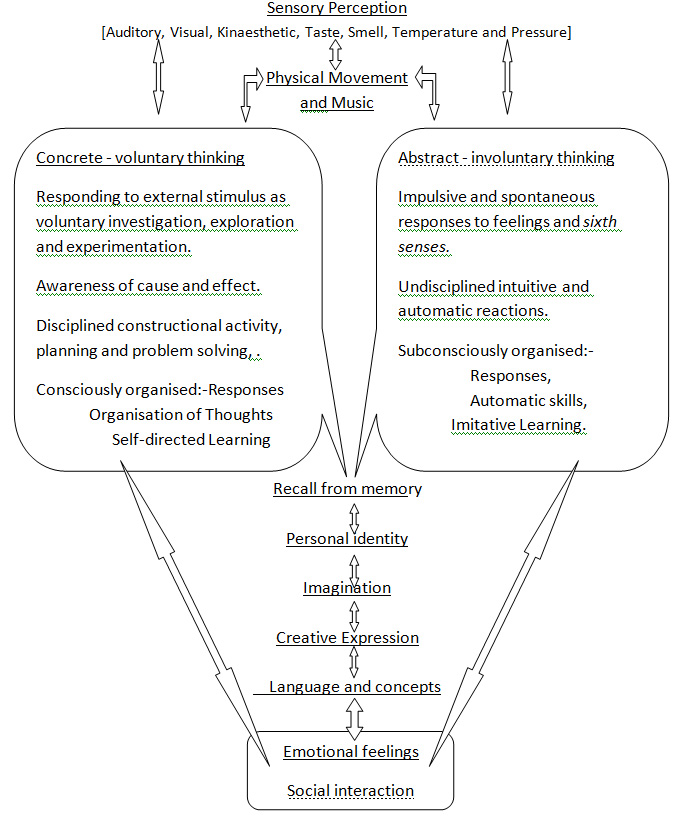
Child development from random movement to the integration of creative expression with creative production,
the integration of abstract inner feelings with concrete external activity.
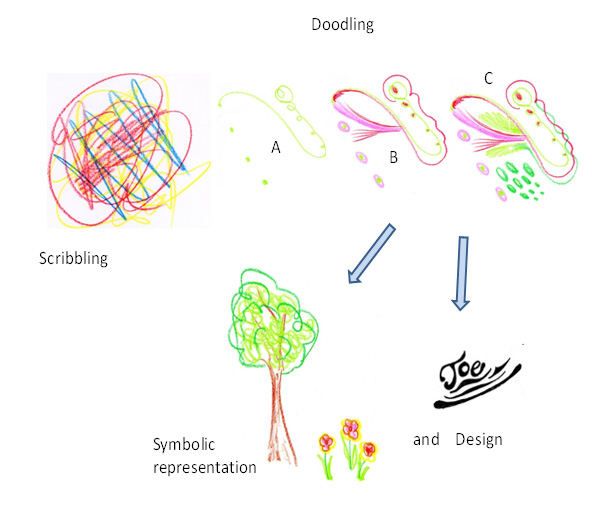
Child-directed learning inevitably involves an integration of concrete and abstract brain activity which Steiner described as the structural elements and musical elements. When these elements unite they create a sense of integration and harmony, e.g. imagination, poetry, eurythmy, problem solving.
This diagramme illustrates
Creativity as a union of environmental activity with feelings,
uniting fantasy with reality and facilitating the embodiment of joy described as enjoyment.
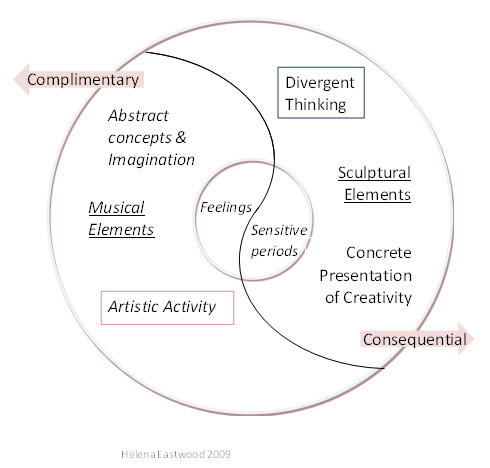
The contrasting lists below illustrate two types of thinkingwhich the author describes as abstract and concrete; Steiner describes as ‘the musical elements’ and ‘the sculptural elements’ (Steiner,1982:52)and Fisher describes as ‘a division between creative or exploratory thinking and critical or logically analytical reasoning’.
‘Creative----------------------------------critical
Exploratory------------------------------analytical
Inductive-------------------------------deductive
Hypothesis forming----------------hypothesis testing
Informal thinking-------------------formal thinking
Adventurous thinking--------------closed thinking(Bartlett)
Left-handed Thinking-------------right-handed Thinking(Bruner)
Divergent thinking-----------convergent thinking(Guildford)
Lateral thinking---------------vertical thinking(De Bono)’ (Fisher, 1990:32)
However, high intellectual thinking abilities are not, it would seem, necessarily a pre-requisite for later notable levels of achievement.
‘.......:commonly high achievers are not predictable from early excellence so much as from their investment of time and energy.’ (Meadows 2006:257citing Radford1990)
The chart below unites the previous yin yang diagram and Fisher’s list of different types of thinking within a more practical perspective that may indeed be more representative of the child’s experiences of learning through play:-
Supporting Children’s Creativity and Creative thinking
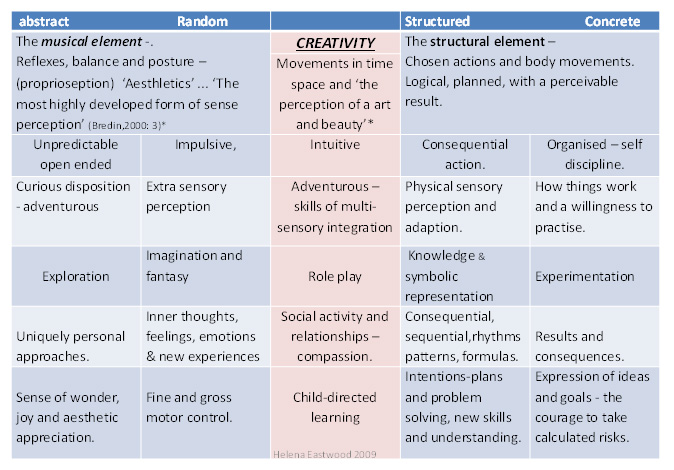
Supporting Children’s Creativity and Creative thinking is acknowledged in the list of recommendations below:-
|
|
Integration of Concrete and Abstract Perspectives
Supporting enhanced creativity and self-directed learning.
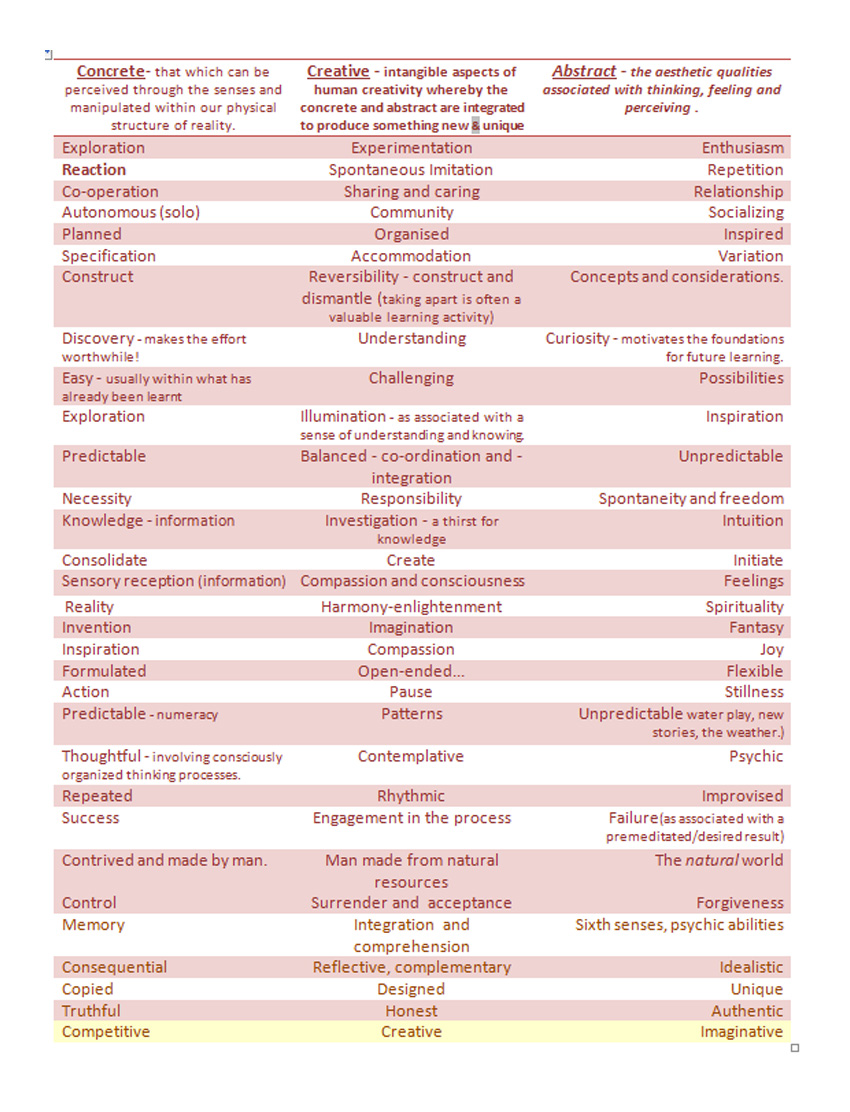
The main focus for adult facilitation is meeting what the child is choosing to do rather than what result is desired and/or achieved. Never-the-less sometimes an adult’s experience and awareness of complimentary choices can provide good scaffolding for the child’s learning process. A good directive for adults wishing to support creative endeavours is
Simplify -For example:-
MAKE IT BIGGER
Outdoor activities -v- indoor activities e.g. at the stream -v- indoor water play; maypole dancing –v- sewing and table top weaving activities.
Make it slower.....-
| ‘With assistance, every child can do more than he can by himself – though only within the limits set by the state of his development.’ (Vygotsky,1986: 187) |
E.g. Badminton –v- tennis
Prioritise focus on a specific aspect of the skill.
e.g. Painting with prime colours on wet paper to make secondary colours.
Enrich the experience with diversity and/or a multisensory approach.
E.g. Supporting an area of interest with a suitable project and/or special outing.
Enhance motivation –within the context of useful skills, the child’s interests and abilities (scaffolding), personality and disposition.
Provide reflection and open ended questions
i.e.Questioning the question; identify successful activity with appropriate positive feedback and encouragement.
Encourage the child to lead/direct every aspect of the adult’s interaction and participation. Listen to every aspect of the child’s verbal and non-verbal communication.
Development is about moving beyond the limitations (mental, physical, emotional,) of the present moment into a future of greater potential. Adult assistance can thereby either compensate for developmental weaknesses by directing what to do or by actually doing the activity themselves. Alternatively the adult could scaffold the limits set by the child’s present level of development in such a way as to strengthen the weaknesses and encourage adventuring into new levels of doing; in this way further development is encouraged. This is the true art of teaching and the most effective form of caring and sharing
| When I follow someone else’s suggestions I may ultimately lack confidence in myself and my own choices and learning techniques. This may be seen as lack of confidence, withdrawal, rebellious behaviour, depression, mental limitation or disturbance, repetitive or even addictive behaviour. The effort is takes to clear myself of a negative reaction helps me to find the strength to reassess my situation from my own authentic perspective and thereby create a more naturally pleasing way forward for myself and others.
So I need to stand strong in my own strength; ‘I don’t know’ is a NO until I find a genuine YES. Only then will I be able to find and accept the help and support that helps me find and follow my own truth. |
Bibliography – Scaffolding Child-directed Learning
Bernard, H.W. Psychology of Learning & Teaching. New York: McGraw-Hill,1965
Childs, Gilbert. Steiner Education. Edinburgh: Floris books, 1991
Childs, Gilbert. The Life and Works of Rudolf Steiner . Edinburgh: Floris books, 1995
Childs, Gilbert. Education and Beyond. Edinburgh: Floris Books, 1996
Department for Children, Education, Lifelong Learning and Skills.Play/Active Learning Overview for 3 to 7year-olds. Welsh Assembly Government: 2008
Duffy, Bernadette. Supporting Creativity and Imagination in the Early Years 2nd Edition.Maidenhead: Open University Press, 2006
Einarsdottir, J. & Wagner, J.T. Nordic Childhoods & Early Education. Connecticut: Information Age Pub.,2006
Gardner, H. &. Kornhaber M. L. & Wake W.K. Intelligences Multiple Perspectives.Harcourt Brace: Orlando, 1996.
Hainstock, Elizabeth G. Teaching Montessori In The Home - The Preschool Year’s.NewYork : Plume, 1976.
Hohmann, M &Weikart, D.P. Educating Young Children Second Edition. Michigan: High/Scope Press, 2002
Janis-Norton, Noel.In Step with Your Child.Edinburgh: Barrington Stoke, 2004
London Montessori Centre.Foundation Unit. London, L.M.C.: 1982.
Matherson C. &Matherson D.(Eds) Educational issues in the Learning Age. London: Continuum, 2000
McAllen, Audrey. E. The Extra Lesson Stourbridge: The Robinswood Press, 1985.
Montessori, Maria. Dr. Montessori’s Own Handbook. New York: Schocken Books, 1965
Montessori, Maria. The Absorbent Mind. Oxford: Clio Press Ltd. 1988
Montessori, Maria. The Discovery of the child. New York: Random House Pub. Group, 1967
Montessori, Maria. The Secret of Childhood.: New York Ballantine Books, 1966
O’Connell, Brian. Aspects of Learning.London: George Allen & Unwin Ltd., 1973
Oldfield L. Free to Learn. Stroud: Hawthorn press, 2001
Piaget, J. The Language and Thought of the Child. London: Routledge,1926
Rawson M. & Richter T.(Eds) The Educational Tasks and Content of the Steiner Woldorf Curriculum. Forest Row, Sussex: Steiner Schools Fellowship Publications,2000.
Riley,J. (Ed.) learning in the Early Years. London :Paul Chapman,2003
Roopnarin J. L. & Johnson J. E. Approaches to Early Childhood Education.New Jersey: Pearson Education Ltd., 1987
Smidt, Sandra. Early Years Practise 2nd Edition. London: Routledge/Falmer, 1998
Standing, E.M.Maria Montessori, Her Life & Work.New York: Mentor-Omega, 1962
Steiner, Rudolf. Child’s Changing Consciousness & Waldorf Education. New York: Anthroposophical Press, 1988.
Steiner, Rudolph. Balance in teaching. New York : Mercury Press, 1982
Stones, E.An Introduction to Educational Psychology. London: Methuen, 1966.
Weil, S.W. & McGill, I. Making Sense of Experiential Learning. Stoney Stratford: SRHE & Open University Press, 1989
12 Points for Encouraging and Scaffolding Child-Directed Learning
1) Encourage exploration and personal discovery rather than showing the learner how to do something or giving the answers.
2) The Emotional environment is as important as the intellectual environment.
3) Trust the child will know the right time to begin learning formal skills. For example children who begin to reader later than considered normal often develop greater comprehension skills and faster reading speeds than theirpeers who learnt to read at a younger age.[Helena Eastwood considers that ideally seven years is the earliest and fourteen the latest age for optimum development of comprehensive reading, writing and spelling skills in one’s native language]
4) Ask a supportive question that encourages discovery learning instead of giving the answer. For example if the question is ‘How do you spell sat?’
The answer could be ‘Do you know how to spell ‘hat’.
Question what is difference between…….sat and hat?
Could you now have a go at spelling sat?
If the child and adult helper cannot find a successful way of establishing a discovery learning approach to the child’s needs, it would normally suggest that the child is venturing beyond their present learning potential. When the adult does something for the child, without engaging in a shared learning process, then the child moves away from his/her learning potential and becomes dependent upon the adult’s level of ability. When this happens a child can feel dissatisfied with his/her own notably lower level of ability, and loss confidence in his/her own learning and progress.
5) Present desired skills and information in a concrete format that can be seen and experienced instead of verbally describing a way to do it.
For example: when pouring from a jug lift the container up under the spout before beginning to pour then slowly lower the container once the flow of the pouring has been established successfully.
6 Avoid presenting verbal interruptions or personal comments/judgements on what the learner is doing.
7) Encourage the 3 Es’ Enthusiasm, exploration & experimentation.
8) Avoid distracting children away from being fully absorbed and focussed on what and how they want to do something for themselves. Discovery learning will always involve learning by trial and error. A child will not feel happy to immediately stop doing something that is important to their learning, and they will not be happy to accept the adult’s attempt to distract them into another activity.
9) Multisensory delivery of the material and the discovery of information will facilitate a higher potential for learning.
10) Child-Directed Learning embracesthe art of adapting information acquired through previous learning experiences to aid discovery of further information, understanding and skill. It is a natural part of play and learning and results are always superior to directed and copied experiences promoted by rote learning techniques. Self- directed learning is naturally self-motivated and results are always more satisfying than copied rote learning techniques and learning experiencethat has been directed by someone else! [Even if the person is a helpful? expert!]
11) Maximise free play in natural outdoor environments and other simple, aesthetically pleasing, child friendly environments.
When children are over-stimulated they can lose their natural ability to play happily and then adults can find themselves making unwise compromises: When the ‘I don’t think I agree with .....’ response become a ‘yes, it’s alright,’ and the ‘you shouldn’t really’ becomes ‘it’s OK I’ll pretend I can’t see.’
Dominantly visually stimulating environments are commonly associated with man-made systems of entertainment, confinementandrestraint; e.g. buggies, car seats, or sit in bouncy chairs and harnesses and other sit-in roll around device, and media entertainment: TV, computer and video games.
In general adult contrived entertainment supports an externally specified repertoire of repeated responses to a man-made environmental stimulus.TV, computer and video games provide visual entertainment which has minimal potential for new learning due to the lack of personal endeavour, i.e. physical and social interaction
Examples of over-stimulating environments that do not support natural development, multisensory learning and self-directed discovery learning:-
•Repetitively reactive man-made toys that are usually battery operated.
•Junk food, sugary sweets, chocolate and coffee and peppermint.
•Theme parks, indoor swimming pools and gymnasiums.
•Prolonged or excessive periods in confined man made spaces with artificial lighting, e.g. supermarkets and shopping precincts, long car journeys.
•Dominating adult speeds of activity and adult schedules.
•Libertarianism, I can do anything I want, and you can do anything you want. Rigid routines, and mechanical or theatrical styles of response that exclude individuality and authenticity.
•Exclusive forms of play with pre-determined play materials e.g. Small Lego, Barbie dolls.
•When verbal communication is too loud, intense or too heavy and it creates verbal domination and verbal overwhelm.
•Adult initiated/motivated/enforced apprenticeship into clubs and classes, e.g. ballet or boxing. [Only when attendance is genuinely child motivated and appropriate to the child’s ability, personality, age and development will the child develop a genuine empathy, interest and personally valued talent.]
•Adult entertainment-adults social events, cinema, theatre, dining out etc.
•Television, films and computer games
Fortunately the modern crystal screens do not present issues around the subconsciously received fast flickering effects from the conventional television. However, there is still some concern around the young child’s visual perceptual experiences when watching screens. This is because the young child is thought to absorb everything he sees as important to his learning about the world around him/her. S/he is thereby obliged to make some form of relationship between what is seen on the TV and his real experiences; his ability to do this can produce some very distorted perspectives on life. The level of visual stimulus from screen viewing may be so overwhelmingly strong that a child’s natural multisensory learning may become dominated by visual information. Also, the natural balance of physical, mental and emotional integration seen in normal play is disrupted and this may subsequently limit the child’s learning potential.
12) A good healthy diet can help promote; physical fitness, mental focus and concentration, intellectual potential, and a calm and assertive attitude towards learning through play.
The Extra Lesson
By Audrey E. McAllen: Robinswood Press, Stourbridge 1985
‘the content of this book is an attempt at correlating the approach initiated by Rudolph Steiner with the problems presented by the child with learning difficulties.’ (p8)
[Note from Helena Eastwood. This book is focused upon what Steiner referred to as the extra lesson. This was Steiner’s way of offering an enricher supportive learning environment that was presented as one to one ‘special time’ with a teacher who would attempt to help a child make good of areas of their development and learning that are not for one reason or another meeting the child’s true learning potential. Even today many children placed at the Steiner schools are there in order to get the holistic Steiner approach to learning. Steiner’s focus on creativity and the natural world, music and drama offer children a chance to be inspired to meet their real potential. Children who have experienced an alternative education appear to have a notable level of confidence and ability to engage in self-directed projects and hobbies. Even those children with specific learning difficulties often do extremely well in the Steiner schools, especially those who receive extra lessons, either in basic academic skills or learning to play a musical instrument, dance, drama and eurhythmy. This encouragement in the arts at young age can greatly boost any child’s development and academic skills. Steiner’s passionate embrace of music and arts and crafts is also seen in more recent approaches to educational, such as Reggio Emilia, Forest schools and High/Scope nurseries. Maria Montessori also presented a strong focus on creative activity through project work and this approach gains more focus after the age of seven. Before this age most alternative approaches focus on a rich environment that encourages natural play and learning.
Audrey E. McAllen’s book on the Extra Lesson clearly presents how we can improve on our understanding of how children learn and what we can do to empower them all to do well.
The following notes are a window into the Steiner philosophy as presented by Audrey E. McAllen in her book titled The Extra Lesson.
Introduction
The Physical body is governed by the - Life force –the ethic body- the energy responsible for growth and sustainability within plants and animals.
Soul life- the astral body - consciousness – feelings, the pain and pleasure –
The human spirit – the faculty of thinking – willing – the ego
‘Our physical body as such is the reflecting organ of our consciousness of thinking, feeling and willing directed by the spiritual member, our ego.’ (p5)
The threefold form of the adult body –
The head – predominantly responsible for the reception of sensory information and its organisation within the brain as our thinking activity.
The chest, the centre of our ’feelings for life’ - containing the heart with its active responsibility for the circulatory system and the lungs the ‘seat our breathing’.
The sustaining metabolism and limbs– responsible for assimilation of food and ‘willed’ movements of the limbs.
‘Ideally, this inner and outer picture of the human form should be in Unison. During the first seven years of our life the agents of this imprinting are movement and speech.’(p6)
There is a spiral of movement throughout our body moving from above to below, from left to right, from outside to inside. The spiral movements are acknowledged and reflected within the early years activities such as ‘weaving, spinning, stirring, wringing out washing, etc. All activities which bring to birth intelligence....’(p7)
Chapter one
The development of movement in the first Seven years.
In Victorian Times the newborn baby had a very quiet regime for this first six weeks of life before he was old enough to lift his head himself.
Some aspects of today’s baby care are not recommended:-
‘the wealth of sense impressions which pour ‘on to the young baby from birth onwards’.
Leaving the baby on his tummy before he can lift his head and roll himself over.
Encouraging the baby to stand prematurely, holding him in the vertical position before he has developed controlled of the posture of his body.
Stages of movement development during the first seven years
Co-ordinated movement in the horizontal position
Crawling and creeping when the child learns the gravity weight of his body – a full integration of the central nervous system that reflects our spatial and bodily awareness
Uprightness combined with the midline barrier whereby both hands each work on their own side of the body creating an ambidextrous state
Dominance with handedness, 6-7 years. At this time left and right hemispheres have developed their ‘holistic and localised functions’.
In the last stage the threefold structure or the form of the body is present, the child can now place the arm over the head and take hold of the opposite ear lobe. He has found his physical body.
The child can consciously engage the will and has an awareness of ‘body geography’ and has established aspects of dominance e.g. hand, eye, foot and ear.
‘The milk teeth of the hereditary body are pressed out and his own individual teeth take their place’. At around this change of teeth the child can meet the requirements to learn and subconsciously organize skills of: spatial orientation, movement coordination and the ability to be able to change his sight perception instantaneously between three dimensional and two dimensional space.
Chapter two
How do I get into my body
The young child imitates the people who are important in his life. By the age of seven the child will have strengthened its individuality and thereby gradually transformed the imitated patterns into ones expressing his own ‘latent abilities’.
When the child has been over stimulated; complicated sense impressions have overwhelmed the growing child, he may become apprehensiveand there natural movement of the ’will element’ may go into reverse.
The exercises in the book bring about correct movements and directions based on the child’s archetypal movement - relationships between the soul and spirit and the life body and the physical body. The child discovers through his own activity and ‘feels strengthened in identity and confidence’
Chapter Three
Children with writing, reading and arithmetic problems
The teachers in a Waldorf school are encouraged to develop detailed awareness of each child’s development and personality. This chapter begins with an example of the child whose behaviour had become difficult in class for no apparent reason. His teacher noticed a pinkness around his eyes and on seeing the anthroposophical Doctorwho prescribed natural treatment for his condition and within a short time his behaved was normal again.
‘constitutional problems, such as, asthma and constipation are greatly helped by curative eurhythmy, while both physical and emotional problems can be ameliorated by artistic work and therapy.’
When playing the game of musical hats teachers can observe the size of each child’s head.
Large head:-Connection with soul -spirit
Rich imagination, essentially artistic
Reading whole words, may not notice individual letters, and may be a poor speller.
Handwriting - large, poorly spaced wobbly letters
Good comprehension
Small head:-
Connection with life and physical bodies
Warm has a more logical mind and may be practical and skilful with his limbs.
Sees detail and will probably know how to spell
May not have a deeper understanding of what he reads.
Handwriting, small letters, written close together and too much pressure
Either of theabove types are liable to display classic dyslexia symptoms. This may be caused by: an imbalance in ‘the in-breathing’of the soul spirit (either too strong or too weak) and the life body, environmental pressures, relationships at home, emotional problems. Developmental delay may be caused by retained primitive reflexes, confusion with hand dominance, poor body image,failure to attain spatial orientation.
All learning difficulties are symptoms of co-ordination/spatial orientation problems and incomplete development of stages between one and seven years, ‘and need immediate attention before secondary psychological reactions set in.’
Chapter Four
The First Remedial Lesson
All the exercises presented in the extra lesson can be used from eleven years onwards. It may be advisable to support this with Eurhythmy therapy and/or Hauschka artistic therapy and/or Bothmer movement exercises.
Good hand eye coordination arises from ‘rhythmic movement’.
Ask the child to draw a line down the centre of the paper (this brings out the child’s relationship between left and right) and tell him to put a cross on one side of it. ‘the symbol of the cross documents standing in space’. When the child draws the vertical cross he tells us that his visual capacity in left right and above below orientation is awake . He will have a quick physical reaction to movement . If he draws the diagonal cross it shows he is held back in his life processes and has a slower physical reaction to movement perception. The children who put the cross on the right side of the line indicate that there are obstructions hindering their perceptual physical reactions. ‘it is very rare for the type of cross to be changed’.
‘’ to characterise, the user of the vertical cross on the left side of the line will see something falling and catch it in time, but he will not necessarily assess what caused the incident. When the diagonal cross is placed on the left side, the user will see it happening and be able to explain why but he is not likely to be in time to avert the accident without a great effort of will on his part.
This chapter goes on to describe activities that illustrate:-
• Established dominance and cross dominance.
Activities presented for this include looking through a roll of paper, closing one eye, standing or hopping on one leg, kicking a ball,etc. The recommended activities are those that involve looking and aiming activities such as, skittles and throwing games.
• Hand eye and speech coordination.
Suggested activities include sorting the beads and then counting the beads as they drop into a jar.
• Handedness and relationship to three dimensional space.
Draw a large red circle on a white card 20in by 30in. Place the card upright against a wall.
‘An exercise to establish co-ordinated dominance and produce the correct movement pattern for the right side of the body in relation to the astral soul body, ether (life) and physical bodies’
This exercise illustrates the integration of balance and self movement engaged through the postural system.
The flower rod exercise (mirroring)
This exercise illustrates if the child can visualise inwardly to himself the spatial dimensions. The teacher presents to the child how to make the drawing and invites the child to share the experience by completing the mirror image on the opposite side of the central line. Finally, the child is asked to do the whole form from memory.
Eye colour affinity-awareness of inner space. From seven years.
The colour blue belongs to space which stretches out expands and surrounds us; it is a passive cool colour and corresponds to the left eye and thought.
The colour red draws together and comes towards us; it is an active warm colour and corresponds with ‘the will’ and the right eye.
‘If we experience these colours inwardly our feelings are aroused’ (p27)
In this exercise the pupil is asked to draw a blue Moon and a red sun. Ideally the colour and position of the Moon and the Sun should correspond with the associated left and right eye.
Children who reverse this positional responsehave not established the will forces and remain held in the habit patterns and organic activities of the body. ‘He is asleep and lives passively in what he has imitated and inherited from his parents.’ However, some time reversal happens for a short period of time when the child is adapting to a new stage of development or overstrained physically or intellectually or emotionally.
Mirroring (from 9 years )
This exercise illustrates whether ‘independence between hearing and visual activity is established’.
Positional responses – primitive reflexes and midline barriers
The retention of specific reflexes interferes with posture, free movement, the appropriate sitting positions, eurhythmy, gymnastics and games, handwriting and copying from the blackboard.
The following primal reflexes
1. The asymmetric tonic neck reflex
2. The symmetric tonic neck reflex
3. The tonic labyrinth reflex
4. The horizontal midline barrier and the vertical midline barrier
5. Tactile defensiveness
aredescribed together with how to assess their presence and remedial exercises.
Further assessment and remedial spatial orientation and body geography exercises are presented for
• Eye Movement
• Sidedness
• Presence of ambidexterity
• The overall picture of the child’s situation as presented within their person,house, tree picture activity
The conclusion of this chapter describes art activities that can be used to assess children’s readiness for class one and the use of the balance-board to extend relevant exercises.
Chapter Five describes exercises related to the development of spatial orientation and body geography.
Chapter Six
The reintroduction of formal work in reading and arithmetic
This chapter emphasises the importance of pictorial imaginative association when the children are learning initial literacy and numeracy skills. The author describes how through their stories children can express themselves on a deeper level than their spoken communication.
Reading aloud
The chapter also describes activities that help to prepare them to gain the ability and confidence to read aloud. Rhythmic reading is also recommended to help the development of reading and writing.
There are also suggested some arithmetic activities designed to build ‘confidence and pleasure in the beauty of numbers’.
Chapter Seven
Structure and timing of lessons
‘The lesson should be composed so that it is an artistic experience for the pupil’
‘Exercises should be chosen on the principle of in and out breathing, expansion-contraction element and the three soul faculties of thinking, feeling and willing. ‘Movement exercises and painting must be maintained and comprise the greater part of the lesson’. Homework for ten minutes a day must be given. Progress must be monitored and reassessed at regular intervals. Movement, drawing and rhythm must be an important part of the lesson.
Conclusion
Form drawing helps the child develops visually and inwardly and consciously calls on the ‘inner intelligence hidden in each human being ’. These basic forms are discovered and rediscovered.‘They raise man’s thinking to eternal truths and at the same time make him master of the earth.’
A topic and project approach to child-directed learning was pioneered by the Villagers of Reggio Emilia in 1946 for their pre-school children.
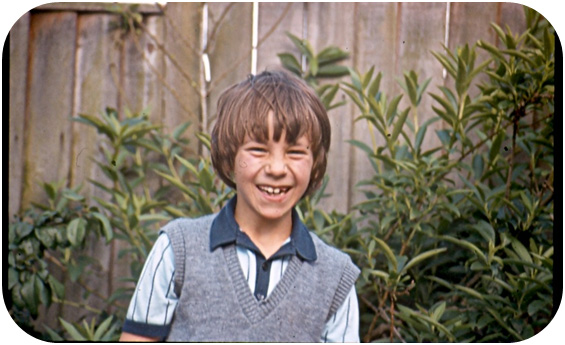
The Reggio Preschool Pedagogy wasdesigned to restore the young children’s rights to choose for themselves and joyfully retain:-
Their personal liberty, A love of learning & enthusiasm to participate with passionate creativity.
Contents
Introduction to The Reggio Preschool Pedagogy
A ‘creative and reflective pedagogy’ (Bancroft,2007:5)
oflistening and relationships. (Abbot,Nutbrown,2001:128)
Reggio theory in practice
Examples of Working Practice:-
- A Child Initiated Emergent Curriculum
- ‘Giovanni’s 3-dimentional construction ‘The Mountains of Past and Future’
Using Various Media Resources
Reggio Pedagogy
Qualities Associated with Creative Learning
The Reggio Pedagogy Integrates Previous Educational Theories
A Yin and Yang perspective
Adults share their personal knowledge and experience through their wider access to resources,
Inappropriate adult input can be ignored:-
Extending investigation into the community.
Integrating II and III dimensional representation
Engaging in an emergent curriculum of creative activity.
Celebrating Change
Motivation
Thinking Processes
Qualities associated with the Human Potential
Conclusion
Steiner, Montessori and Piaget
Early year’s development
The essence of Reggio approach summarised by the author
Conclusion
Introduction to The Reggio Preschool Pedagogy
| In 1946, after Nazi occupation of their home land, the villagers of Villa Cella, Reggio, Italy, sought to create a culturally progressive experience for their new generation of young children. The cooperative efforts of the working community; the farmer’s, the day labourers, the factory workers built and funded a specially designed nursery school for their children. (Opened January 13th, 1947 with 30 pupils, a teacher and a cook).
‘In every brick of “the people’s preschool” there was trust, awareness, willingness, and hope.’ (Barazzoni,2000:29) which inspired:- Socialised Management, Democracy, Young children as Liberated Citizens. This ‘profound illustration of humanity’ founded ‘a culture and professionality’ (Barazzoni,2000:28) based on ‘the richness and concreteness’ (Reggio Children,2000:9) of children’s ‘ideas, theories, questions and opinions’. (Katz,Cesarone,1994:25) |
Later many other nursery schools were established in the Reggio region following the same ethos of socialised management, democracy and vision of the young children as liberated citizens. These schools remained in the care of the village Cooperatives until 1967 when the Municipality of Reggio, the civil council took over the management and financial welfare of the nursery schools.
The Reggio approach emphasises the development of the child through the content and organisation of projects that focus on the development of a child who:-
- employs all of his resources,
- is capable of making choices
- is responsible for his own actions,
- has a sense of solidarity,
- hasa desire to learn and participate in the learning process with extreme creativity.
Reggio philosophy is based on ‘a culture and professionalism which regenerate themselves as they keep up with social changes and with the children’s needs and values’.(Barazzoni,2000:28)
The Reggio approach uses various media in order to create different representational sequences and combinations that record children’s creative activity and thereby present opportunities for reflection, assessment and progressive development. Different materials and media are considered important because they engage the children in a personally meaningful context that connects to other meaningful experiences. The creative value presented by Malaguzzias the ‘100 languages of children’(Bancroft,2007:14,citingMalaguzzi)appears to integrate the different intelligences described by Gardner as :-
Linguistic intelligence.
Musical intelligence.
Logical - mathematical intelligence.
Spatial intelligence.
Body - kinaesthetic intelligence.
Plus : Intra/inter personal intelligence ‘knowledge of emotions’, control of emotions and sensitivity to one’s own and others emotional states.’ (Gardner,1993:69)
Also Naturalist intelligence ‘extensive knowledge of the living world’. (Gardner,1993:47-48)
Spiritual intelligence ‘the abstract realm of the spiritual’. (Gardner,B????:53)
Extensional intelligence ‘aesthetic philosophical and Scientific works and systems’(Gardner,B????:61)‘
and‘possibly moral intelligences’.... ‘morality is then probably a statement about personality, individuality, will, and in the happiest of cases, about the highest realisation of human nature.’ (Gardner,B????:77) ‘....clearly we must strive to nurture both intelligences’ and morality and, insofar as possible, yoke them together as virtues’ (Gardner,B????:46)withina topic based curriculum that actively generates a richness of intellectual development within the context of informed conceptualised thought.(Gardner,1993:73)
‘The Reggio Emilia approach is highly regarded for the quality of its intellectual content, responsiveness to children, extraordinary aesthetic value of children’s production, and for the effectiveness of curriculum documentation.’ (Feeney, Galper, Seefeldt,2009:232-233)
Spaggiari– Director of the Municipal Department of Education of Reggio Emilia, describes the pedagogy as one which supports and confirms the following :-
- A child’s knowledge is aided, in its genesis and in its development, by interaction and social cooperation;
- Education is conceived in constructivist’s terms in that it is the child himself who is the builder and main protagonist of his life and his learning processes;
- Children are moved to an unlimited curiosity and by a greater and innate desire to know and to discover;
- This extraordinary desire to investigate reality must be made visible and helped to grow and develop without being imprisoned in reconstituted models based on programmed information;
- The most important ability for a teacher is knowing how to capture those vital and significant events as they appear, around which the teacher’s invention should be organized.
Reggio philosophy encourages adults to respond to the children’s interests and initiatives; the children thereby gain a resource of worldly knowledge and experience that can be integrated within their own chosen theme/topic of study.
‘The studies engaged in by children and teachers are conducted over fairly long periods of time and may be quite elaborate.’ (Feeney,Galper,Seefeldt,2009:232) This organically provides an enrichment of choices, speculation and negotiation. As the interest grows the child/ren initiated activities; thoughts and ideas motivate sustained learning within a specifically identified area of cognitive development. Within the context of child initiated learning, Reggio suggests that the uniqueness of experience and activity presented, by both the child and the adult, creates a spontaneous potential for creativity and opportunity across a wide spectrum of child-directed learning.
The adults are therefore called to structure the educational experience primarily as it evolves rather than beforehand. They may initiate co-operatively organised follow up choices of activity that support a natural extention of the children’s free-play activities. (Cited in Reggio Children,2000:8)
Loris Malaguzzi(1920-1994)was the first pedagogical director of the municipal early childhood services in Reggio. Malaguzzi’s‘invocative thinking’ created a ‘pedagogy of transgression’ imbued with ‘hope and expectation’ (Barazzoni,2000:2),based on a philosophy of community participation and the expression of ‘the 100 languages of children’ (Bancroft,2007:14) within a child initiated topic approach to learning. The topic-project approach creates a community of children and adults working together. Active and sincere in their participation, co-workers openly ask questions and happily acknowledge what they do not know, and where and what they would like to understand better. ‘Information flows from the older ones to the younger ones, or from those who possess knowledge to those who don’t.’ (The School DVD:5-6)
The Reggio exhibition of the 100 languages of children expanded the psychology of intellectual development into a kaleidoscope of creativity illustrated through the children’s world of communication - ‘a shining testament to human possibilities’ (Gardener cited in Children in Europe,2004:3)
‘......the capacious and inspiring conception of children - as active, engaged, exploring young spirits, capable of remaining with questions and themes for many weeks, able to work alongside peers and adults, welcoming the opportunity to express themselves in many languages, to create new ones, and to apprehend and enter into those modes of expression that are fashioned by their age-mates.’ (Gardener cited in Children in Europe,2004:17)
A ‘creative and reflective pedagogy’ (Bancroft,2007:5)
of listening and relationships. (Abbot,Nutbrown,2001:128)
The roles of the Reggio teachers
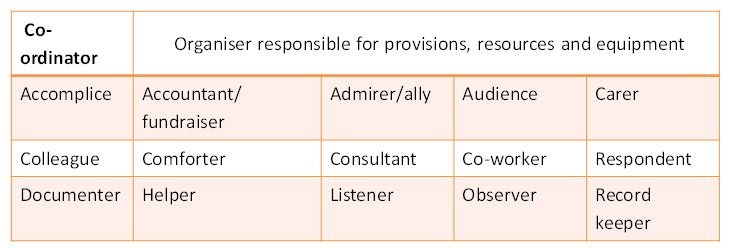
A pedagogy imbued with open-hearted authenticity ‘.......the activity of making projects conceived as functional interaction between needs, resources, conditions, knowledge and method.’ (Reggio Children 2001:56)
Reggio teachers feel it is important to focus on beauty, art and aesthetic value.
‘the attention to detail and beauty’ ‘foster the children’s aesthetic sense’ and illustrates ‘an “amiable” environment where relationships can flourish.’ (Frazer, Gestwiki,Ed. 2002:89)
The Reggio approach
The Reggio approach appears to have an integrated focus on participation, democracy, social and environmental relationships, listening skills, child initiated learning,documentation, creativity and independence.These important issues are co-ordinated within the organisation of the physical environment and the social relationships established within the educational community –‘nurturing the pleasure of participation and valuing each person’s individuality.’(Rinaldi,2006:51)Reggio philosophy illustrates a ‘passion for a process that acknowledges our needs as individuals and as a society to engage in a cooperative learning adventure with others, both children and adults.’ (Katz,Cesarone Ed.,1994:36)
‘The layout of the buildings is designed to facilitate meetings and interaction between children, and great care is taken over areas of welcoming and departure.’ (Thornton,Brunton,2005:50)
The Reggio pedagogy appears to be based upon an educational community that respects and values the ability and potential of the individual child and emphasizes that children are competent learners rather than ‘empty vessels that need to be filled with knowledge’ (Frazer, Gestwiki,Ed. 2002:78)
Organisation of Community-based Environmental Foundations
This philosophy is supported by the organisation of community based environmental foundations which are pictorially represented in the diagramme below.

The Reggio philosophy embraces concerns that children may lose their natural ability to learn through creative activity when the adult organizes a predetermined curriculum and agenda of specified time and results. This was presented by
Malaguzziwhen he said:-
‘All that we need to knowabout children, for children, is best learned from the children themselves.’ (Cited in Bancroft,2007:8)
In Reggio adults actively engage in ‘collaboration, dialogue and observation’ (Bancroft,2007:14)which is considered fundamental because ‘when reciprocity is placed at the core of relationships’, ‘patterns of communication in the classroom’ become ‘more respectful, more equal and more interactive’ Respectful collaboration on all levels of interaction whereby leadership steps into the background and allows ‘strength, personalities and perspectives to come together, often challenging each other to create new perspectives and knowledge’, understanding and skills. (Frazer, Gestwiki,Ed.2002:78&94)‘Children are biologically predisposed to interpreting data with incredible creativity- encoding and decoding, listening, communicating and establishing relationships.’(Rinaldi,2006:116)
‘...a process that acknowledges our need as individuals and as a society to engage in a co-operative learning adventure with others, both children and adults.’ (Katz,Cesarone Ed.,1994:36)
Interactions between children and either an adult or a child who is more confident, act as scaffolding to nudge children to go beyond what they can achieve on their own.’ (Frazer, Gestwiki,Ed. 2002:66)
Maybe, it is the adults’ freedom to choose how, where, and when they engages with the children that gives the children permission (by example) to follow their own initiatives, and thereby maintain their natural disposition to meet their true potential?
‘.....they say our teacher’s are beautiful. It is true, there are a few places in the world where teachers in schools, early childhood or anywhere else, are as beautiful, as dignified, as womanly as they are here.’(Rinaldi,2006:167)
Reggio presents children as competent learners, personally responsible for their own actions and their own educational development, in charge of developing their own abilities, embracing their own goals and their own thinking within a holistic integration of information and understanding.
Reggio theory in practice – ‘Following a curriculum based on ideas and thinking rather than content led’. (100 Voices:DVD)
Freedom
Environmental influences of choice and a trusting disposition
Listening
Personal interpretation –generally ‘adults tend to overestimate the children’s academic ability and underestimate their ability to think and problem solve.’ (100 Voices DVD)
Communication
Relationship with an experience – ‘the child as a sophisticated thinker and communicator’.
Truth (100 Voices DVD)
A perspective based on inner feelings and external information.
Courage
Underlying personal confidence and enthusiasm.
Passion- That spark of interest that fuels a path of inquiry and motivates creative expression.
Curiosity - an extraordinary desire to investigate reality, to know, to discover.(Reggio Children, 2000:8)
Children are endowed with ‘genius, talent and creativity.....So to awaken his genius, you need to open his heart, remove complexes, tension and fear.’
The more traditional issues related to the teacher’s professional performance have been transformed into informal co-operative
 How well the adult can listen to what and how the child/ren want to learn and achieve, feeling comfortable with unpredictable activity and creative styles of communication.
How well the adult can listen to what and how the child/ren want to learn and achieve, feeling comfortable with unpredictable activity and creative styles of communication.
Successful scaffolding within the Zone of Proximal Development (Vygotsky) where the ‘emphasis is on relationship and reciprocity and the outcome emerges as it unfolds.’ (Frazer, Gestwiki,Ed. 2002:86)
 How to embrace changes and integrate personal experience with the unique specialness of child initiated learning.
How to embrace changes and integrate personal experience with the unique specialness of child initiated learning.
Facilitating an inherently open-ended learning environment
 An Emergent Curriculum - children working at their own natural pace developing their own style and methods for learning .
An Emergent Curriculum - children working at their own natural pace developing their own style and methods for learning .
Sharing of ideas & possibilities without an attachment to a preconceived result.
Consideration of what others think - the child, the adult and the other children.
Examples of Working Practice:-
Daily timetable incorporates natural periods of flexibility e.g.: Arrival 7.30-9am; departure 3.30-4pm or 4-6.20pm.(Thornton,Brunton,2005:62 )
- Sometimes the adults do not interrupt or disturb the children.‘.......two little girls spent 3 hours or so playing together with a collectionof red and pink glass objects displayed on a lighter box.‘No attempt was made to intervene and move them on to something else.’ (Abbot,Nutbrown,2001:69) A further example (cited in Lewin, Benham,2006:28) – four restless boys went into a store room area, closed the door and were busy doing their own thing unobserved/unsupported/unsupervised until one came and asked for some adult help with a tricky process of moving a complex piece of construction work on to a different table within their working area in the store room.
- The adults facilitate specially designed environmental support.
When the children wanted to make their paper-mache mountain into a volcano the assisting adults helped the children investigatethings that would safely explode in the classroom such as popcorn and baking powder and lemon juice(Frazer, Gestwiki,Ed. 2002:143&177)‘Conversely, it was accepted that children sometimes need to ‘flit’ and activities were established to enable them to do this.’ E.g. ‘..a weaving loom...... so that children could add just one row or perhaps more in passing ’ (Abbot,Nutbrown,2001:69)
- Very special worldly experience. For ExampleGoing to see alocal water tower and later the Space Needleas an extension to the children’s focus on aspects related to height:. ‘They took the elevator up and experienced real height and different perspectives.’ (Frazer, Gestwiki,Ed. 2002:204-207)
- ‘....dynamic interaction of adults and children with one another and with the environment.’ The environment ‘acts as the third teacher’. (Frazer, Gestwiki,Ed. 2002:87&99)
Parents can provide profound, timely and appropriate support.
The perfect ending for the height project was provided when a parent invited the class to the building downtown where he worked. It was one of the tallest buildings in Seattle, looking down on both the water tower and the space needle. (Frazer, Gestwiki,Ed. 2002:208)
Building a pyramid of related experiences.The emergent curriculum within The Height Project illustrates ‘....our need as individuals and as a society to engage in a co-operative learning adventure with others, both children and adults.’ (Katz,Cesarone,Ed.,1994:36)
The Reggio approach encourages children to live in the moment rather than prepare themselves for a futuredefined by the adult educator’s personal views and experiences.Topics of interest organically grow (mindmap) into multifaceted areas of creativity and study, through which each child can find ‘not only an understanding of the specific topic, but also an understanding of their own learning style and a deeper understanding of themselves.’ (Katz,Cesarone,Ed.,1994:50)Rinaldisuggests that‘....every child is stunted if the endpoint of learning is formulated in advance.’
The Reggio approach incorporates:-
- The main aspect within the High/Scope pedagogy which focuses on play and learning whereby adults engage with the children’s play as shared Special Time.
- Montessori teaching methods after the age of seven present learning through child initiated topics and projects of work that encourage the children to work together.
- As presented by Steiner philosophy and practice,the children’s development and well being is nurtured through a rich sensory environment and experiential activities provided by natural materials and aesthetically pleasing surroundings.
A Child Initiated Emergent Curriculum
An ‘exploration of excellence in early childhood education.’
Adults and children working together as a team respectfully collaborating on all levels of interaction, addressing the day to day quality of the children’s lives.
(Frazer, Gestwiki,Ed. 2002:92)(Katz,Cesarone,1994:17)

The teaching adults are called to structure the educational experience primarily as it evolves and thereby capture those vital and significant events, as they appear,(Reggio Children,2000:8)and consolidated, unify and empower child-initiated learning through a commitment to ‘developmentally appropriate practices’ (Katz,Cesarone,1994:17) moulded into the very foundations of a community based child centred approach.
Child Initiated Curriculum
The Reggio pedagogy illustrates a child initiated curriculum based on topics of interest and describes a system of shared learning that can spontaneously integrate the theoriespresented by:-
- Howard Gardner as different fields of intelligence - linguistic, musical, logical (mathematical), spatial, body - kinaesthetic, & inter personal intelligence related to the 'computational power of the brain' and ‘Experiential Intelligence’ which David Perkins terms as 'changable, learnable and reflective Intelligence' (Gardner,1996:2);
- Edward De Bono as different types of thinking– theSix Thinking Hats:
Red-hat Thinking: emotions, feelings, intuition;
White hat -objective information;
Black-Hat: caution, truth, reality;
Yellow hat: optimism, feasibility benifits;
Green-Hat :creative ideas, suggestions;
Blue-Hat, summary, reflection.;(DeBono,2000:13-14 :1992,74-96.) - Tony Buzan’s Mind map approach to the integration of thinking, learning and memory skills. Symbolic representation of the radiating branches of associated thoughts, integrating: knowledge and ideas, left brain thinking (lists, sequences, numbers, letters) and right brain thinking(rhythms, colours, pictures, imagination) with creative thinking and memory skills. (BuzanDVD)‘Creativity is not just the quality of thinking of each individual but is also an interactive, relational and social project.....an everyday right as a quality of life.... It requires a context that allows it to exist, be expressed, to become visible.........What we hope for is creative learning and creative teachers........ the competent and creative child exists if there is a competent and creative adult.’ (Rinaldi,2006:120)
Within Co-operative learning any topic of study or theme of activity can offer children their own free time and individual space to explore their own areas of interest and creativity.However,‘the children don’t just think about living for themselves or their own interests.’(The School DVD:3)Personal goals and individual projects and perspectives are present within collaborative group projects that are ‘working towards a common goal as opposed to working towards a personal goal.’(Katz,Cesarone Ed.,1994:83)
Hoyuelos combines the above description of Reggio pedagogy with ‘....the ideological concept of a transparent school and transparent education and the aesthetic ideaof offering a relational image of childhood through uniting process with content.’ (Cited in Children in Europe2004:7)
Giovanni’s 3-dimentional construction ‘The Mountains of Past and Future’
‘The 100 languages of children’ help children communicate creative thinking skills that are beyond their level of verbal communication.
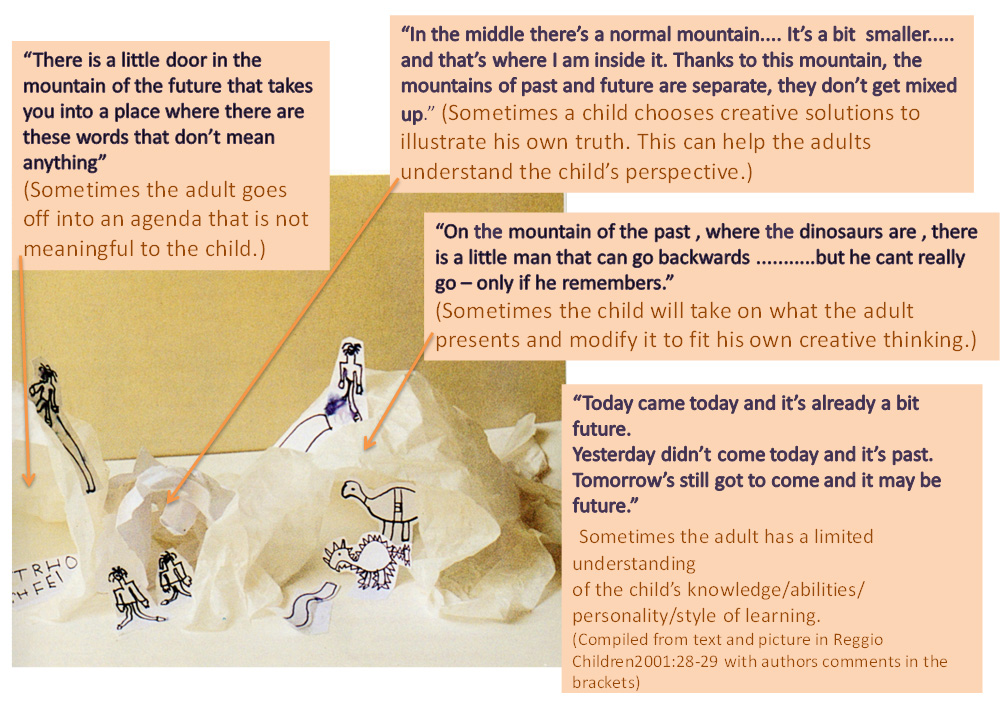
Using Various Media Resources
The Reggio approach uses various media resources in order to create different representational sequences and combinations that document (record) the children’s creative activity and present opportunities for reflection, assessment and progressive development.
The different materials and media technology engage the children in a personally meaningful context that connects to other meaningful experiences and integrates different intelligences (Gardner) within a creative focus. TheReggio approach implies that giving the children the freedom to choose where and with whom, to invest their curiosity, intelligence and their emotionsgenerates a richness of intellectual development within the context of informed and conceptualised thought, illustrated throughtwo and three dimensional construction. (Katz,Cesarone Ed.,1994:42-43)
The Reggio approach appears to encourage the children to develop their personal skills of independence– using multiple systems of communication and open ended areas of choice to support children’s independent skills and thinkingwithin a philosophy that ‘any good creative and expedient work requires considerable discipline and obedience.’ (The School DVD:15)
Cameron suggests that ‘whether freedom is negligence, risk, or independence is a central concern of our times.‘(Cited in Early Childhood,2005:26)
‘Where and how far practitioners can promote children’s independence or freedom and where that becomes “risk”, depend to a large extent on the waythese concepts are understood, not just within early childhood pedagogy but also in wider cultural understandings.’(Early Childhood,2005:26)
When considering risk factors within the context of children’s social-emotional and physical environment, adultsneed to evaluate potential risks within the of promotion of learning and social development.They might need to consider the levels of expectation and independence related to standards of self-help, personal careand management of the ‘social risks of incurring peer or adult displeasure.........the boundary between care and lack of care may be pushed where independence is defined as freedom’. The adults’conceptual understanding of cultural aspects within the local and wider societies,knowledge of each child,and the parents’ views and expectations, may also influence individual assessments of safety and acceptable levels of intimate contact as physical reassurance. Independent thinking andfreedom to make choices may be considered in relation to how ‘restricting options for children’may ‘inhibit creativity’. The children’s endeavours when doing things for themselves may also naturally include some of the positive aspects that risk taking and making mistakes contribute towards children’s learning and development. ‘......this formulation of independence may be culturally specific......Risk is socially and culturally defined.’(Early Childhood,2005:24-26)
The Reggio approach seems to giveunsupervised freedomsto the children (Lewin Benham,2006:28)and supports this with a strong emphasis onan awareness and understanding of the individual child’s needs and abilities; equality‘a precious form of mutual respect’;integration and communication with individual parents; ‘public visibility’ - integration with the local community, cultural and community resources(Children in Europe,2004:2&7);reflective strategies; and an unstructured timetable tend to support children working safely within their own range of ability while engaging in self-motivated activity.
Reggio Pedagogy
The Reggio pedagogy integrates many previously pioneered theories of education and related psychology that emphasize children’s ‘problem solving ability and creative endeavour’. (Bernard,1965:93).
| Qualities that are associated with creative learning:- | |
| Willingness to explore | Experimenting, |
| Curiosity | Enquiring |
| Play and flow | Playfulness |
| Concentration, involvement, immersion | Focus, |
| Confidence and self-esteem. Ownership | Initiating ideas. |
| Perseverance and resilience | Persistence |
| Collaboration and cooperation | Willingness to be involved |
| Imagination and Inventive ingenuity | Observations, making connections, prediction |
| Autonomy and choice | |
| Hypothesis, powerful thinking | |
| Independence and self motivation | |
| Sustained shared thinking | |
| Making connections, Reflective thinking | |
| Risk taking | |
| Joy and surprise | |
| Aesthetic sensitivity | |
| Wellbeing | (compiled from Bancroft,2007:19) |
The Reggio approach encourages children to invest their ‘time and energy’ in socially meaningful creative activity. Research on cognitive development and psychology reviewed by Meadow’s suggests that this can generate children’s consciousness and the higher mental functions that constitute intelligence. (Meadows,2006: 236,257&311)
Both Steiner and Reggio pedagogy relating to the early years 3-7 present a commitment to an emphasis on creative activity within a play and learn philosophy, which places particular importance on aesthetics and the natural world. In keeping with the theories of Bruner and Vygotsky,(Frazer, Gestwiki,Ed. 2002:66)Steiner and Reggio, present social interaction as primary to all areas of children’s personal and educational development, and develop a strong sense of community and inherent cultural influences. They also embrace children’s education within the context of their families, building strong relationships with parents and other family members, based on mutual trust and respect.(Feeney,Galper,Seefeldt,2009: 137,69).Children within an age range of 3-4years, remain in the same class throughout their nursery school attendance offering a continuity of care(Lewin-Benham,2006:58); ‘for relationships to be meaningful, they need to endure over time.’ (Feeney,Galper,Seefeldt,2009:67, citing Hinde)
‘Children who are able to make and retain friendships in the kindergarten typically adjust more easily to school and make greater gains in achievement’ and ‘emotional competencies’. (Feeney,Galper,Seefeldt,2009:107, citing Ladd,1990)
The Reggio Pedagogy Integrates Other Previous Educational Theories
The Reggio pedagogy integrates many previously pioneered theories of education and related psychology that emphasize children’s ‘problem solving ability and creative endeavour’. (Bernard,1965: 93).
| High/Scope – teachers are trained in specific skills and approaches that help children engage in and share their play/learning experiences and resolve their social disagreements and conflicts. * | The author noted that on a video recording of Reggio classroom activity where two children were arguing the teacher approached and organically, from his own natural disposition, engaged in an accurate example of the High/Scope approach to conflict resolution. * |
| Steiner- presented that imagination and creativity are the most essential aspects of play and learning during the children’s early years 3 to 7 | Children have free access to the art studio and resident artist as well as a specified and well equipped art and craft area within their own classroom. There is a strong emphasis on artistic creativity throughout the topics or themes that have captured both individually and collectively the children’s interest. A special a focus is placed on the production of displays illustrating the children’s activities and resulting work. |
| Montessori presented - children should be free within the classroom environment to choose activities and organize their own social interactions and communications and have open access to a garden area. | The children are free to move around the whole of the school campus integrating with children and adults freely. They have open access to a special communal area called the Piazza and an outdoor communal garden. |
| Vygotsky presents - the role of the teacher is to support the child’s learning within the ‘proximal zone of development’(PZD) supporting the child’s choice of activity and unique approach to the potential for learning within chosen activities. ‘... the process of socialisation....was rooted in the use of physical tools and symbols...especially language’ (cited in Gardner,1996:199) | Reggio teachers are encouraged to observe and record the children’s activities and thereby respond supportively to emergent themes of interest or enquiry, and appropriately support the children’s spontaneous interactions. The teacher tries to present enriched environmental choices that are initiated by the children’s own themes of interest and what they feel is appropriate to develop and in the way they want to develop it. Teacher lead activities and teacher initiated choices are considered an optional aspect of classroom activity. |
| Chomsky-presents that learning is dependent upon interactive communication, language development and social integration. | The design and plan of the schools that have been specially built illustrate an openness and connectedness within the different areas. The walls are often constructed of window glass down to the floor; children can go into the kitchen and talk to or help the cook. Media Technology is available to the children and facilitates revisiting, extended dialogue and discussion, reflection, memory etc. |
| Pinney-presented that young children ‘are their own best expert’ and given a supportive, caring environment they can successfully negotiate choices that will enhance their personal, social and educational development. She pioneered Creative Listening, Special Time and Child Directed Learning. | The adults facilitate child initiated learning – ‘the complex and multiple strategies’ that are necessary for sustaining children's authentic ‘knowledge-building processes’ and creativity. B26p132
Every child is an ‘exquisitely individual and personal entity...’ b10p34 |
| Bruner - the importance of languaged communication, social interaction and community and cultural experiences within children's learning experiences. | ‘Rather than focusing on the developing child as an autonomous learner, Reggio...... educators see education as a communal activity and sharing of culture through collaboration among children and also between children and teachers, who opened topics’ ‘to speculation and negotiation.’ B16P71 |
| The Early Years Foundation Stage - Elements of creativity set as principles within concepts of: a unique strong child; positive relationships; enabling environments; learning and development. (Bancroft,2007:9) | The creative value of many languages of expression is actively generated by
‘The 100 languages of children’(Bancroft,2007:14) Cites Loris Malaguzzi ‘in functional terms: order and measurement; time, things and nature; body and movement; speaking and words; messages, forms and media; self and others.’ (Katz,Cesarone,Eds.1994:50) |
A Yin and Yang Perspective
The differences within the Steiner and Reggio pedagogical approaches are considered by the author from a Yin and Yang perspective.
| Steiner supporting a more Yin perspective (female) | Reggio presenting a more Yang perspective (male) |
| Considers child’s learning and creativity is boundless when supported by a growing knowledge and understanding of the natural world and creativity within organized rhythms of repetition and imitation. | Considers child’s learning through creativity is boundless when supported by a team of conscientiously supportive adults, who believe that learning takes place within an uninterrupted momentum of problem solving activity. |
| Embraces fantasy and imagination within the context of creative activity - music making, singing, story -telling and theatre. | Based on scientific, resourceful, exploratory approaches to creativity combined with critical/reflective evaluation |
| Encourages the child’s desires to be creative within a bounteous, natural homely environment with minimal science and technological input. | An environment rich in art, science and technology. |
| A strong emphasis on teaching by example and sharing through the arts - music, dance, non-competitive games and festive events. | A strong emphasis on the child as his own best expert. Using media systems to document and reflect creativity and provide informal feedback. |
| Considers the child as a seedling that adults and communities need to hold in a protective and nurturing environment. | Considers the child as a young citizens within a community of people with whom the teachers, resident artist and staff engage freely as individuals and co-operatively as a team. |
| Emphasizes environmental opportunities and organized interactive activities for the learning of coordination, movement and balance through foundation art and craft skills, playing musical instruments, songs, Eurhythmy, skipping and clapping games, and non-competitive sports. | Emphasizes the importance of supporting children’s right to be :- motivated by curiosity active explorers creators and inventors (creatively representing their knowledge and understanding of the worldly environment.) |
| Encourages the child’s:- - individual personality, - abilities and interests - aesthetic appreciation and creative expression within a community based emphasis on artistic, social and cultural foundations. |
Presents the school environment as a child centred microcosm of the community and world around. Giving a community based emphasis on artistic, social and cultural foundations. The whole community is deeply committed to an ethos of love, respect and care. (Katz ,Cesarone,Eds. 1994:18) |
| Teachers are encouraged to use repetition, revisiting, review and presentation as foundations within the play and learn curriculum. | Documentation is considered an important part of both the adults’ and the children’s in school and out of school activity. |
Like other child centred approaches to education (e.g. Steiner, Montessori, High/scope, Foundation Phase) the Reggio approach has also been noted for the ability to successfully support a small percentage of children who have specified learning differences.
‘Preschools minimize many of the affects of disability and a slower rate of learning because the learning environment matches the developmental and social needs of the individual child.’ (Abbot,Nutbrown,2001:6)
The topic approach can encourage a slower and more in depth exploration and in this way supports a wider variation of interest and ability.(Frazer,Gestwiki,Ed.,2002:264)‘Children’s fascinations initiate a deeper and deeper rather than wider and wider focus of enquiry’.(100 Voices DVD)
Adults share their personal knowledge and experience through their wider access to resources,
‘...a process that acknowledges our need as individuals and as a society to engage in a co-operative learning adventure with others, both children and adults.’ (Katz,Cesarone Ed.,1994:36)
When the children were sharing an interest in being tall, being up high, the teachers created a display board of pictures of tall buildings from Seattle where the school is located. The children built a cityscape right underneath the pictures of the tall buildings presented as a wall landscape created by the adult. Later a mirrored platform was presented.The children built a sky scraper on this and enjoyed the reflective aspect that extended their structure into a new perspective.As the children built a physical structure on the mirror, the building almost doubled in height.(Frazer, Gestwiki,Ed. 2002:205)
Inappropriate adult input can be ignored:-
Listening to the children’s conversations the teachers hypothesized that a possible next path might be birds, so they brought in branches, nests and little bird figures.
‘But continued careful attention to the playconvinced them (the adults) that this was not the direction to pursue.......the (childrens’) play was still about being tall, being up high’ (Frazer, Gestwiki,Ed. 2002:205)
Extending investigation into the community. Emergent, open ended, ‘child initiated, adult framed’. (100 Voices: DVD)
Example: The teachers decided to extend this theme of investigation into the communityand they arranged to visit a water tower in a nearby city park. This visit initiated the project into III dimensional creative work. ‘The teachers offered clay, and the children began to build the water tower brick by brick. For over a month, a number of children worked making the bricks and then using the bricks to build the water tower.’ It was hard, painstaking work but the children were really motivated.‘ ...co-constructing as group members learning from one another’
Interactions between children and either an adult or a child who is more confident act as scaffolding to nudge children to go beyond what they can achieve on their own.’ (Frazer, Gestwiki,Ed. 2002: 94, 206-207,66)
Integrating II and III dimensional representation
As they built, they compared their sketches and referred to the drawings like blueprints. (Frazer, Gestwiki,Ed. 2002:207)
The Reggio approach incorporates the use of cameras as a natural way for children to express themselves and review their projects of activity. For the adults cameras are also considered useful for recording detailed observation and assessment. In contrast to this Steiner kindergartens present that media technology is considered inappropriate within the early years and lower-school classes.
The use of cameras also presents questions around the moral issues related to the children’s right to a camera free play and learn environment. Furthermore, teachers and children may use the camera in situations where a more intimate, multisensory approach to listening and observation could be of greater benefit to one or more individuals. Also, the adult operating the camera may miss a potential for spontaneous interaction that could initiate a more comprehensive understanding of the child/ren’s perspective. Finally, there is the issue of adult responsibility for discerning the appropriate environment, time, place and audience for viewing camera recorded documentation. (Early Childhood,2005:28& 32)
Engaging in an emergent curriculum of creative activity.
The High/Scope application of plan – do – review appears to have been reversed within the Reggio approach as follows:-
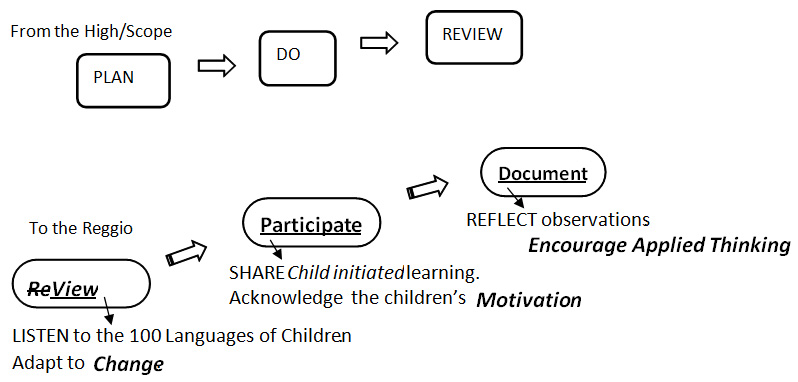
The Reggio approach presentschanging the environment to meet the child/children’s chosen areas of interest and enquiry. Learning differences, interests, abilities and disabilities, potential, physical development,personality and previous experience are all considered creative aspects within a child’s individual preferencesand learning style. The child himself is considered ‘the builder and main protagonist of his life and his learning processes.’(Reggio Children,2000:8)
When facilitating children learning through creative activity, Reggio teachers also appear to successfully integrate the influences ofChange, Motivation, and Applied Thinking .
Celebrating Change
Reggio teachers appear to creatively relate to elements and influences that facilitate change -acknowledging that changes may also be implemented by problem solving processes and learning to support, to nourish, to help what is already growing within the child.
‘By surrendering our personal insistence to the larger current of meaningful change.’ (Hellinger 2007:184)
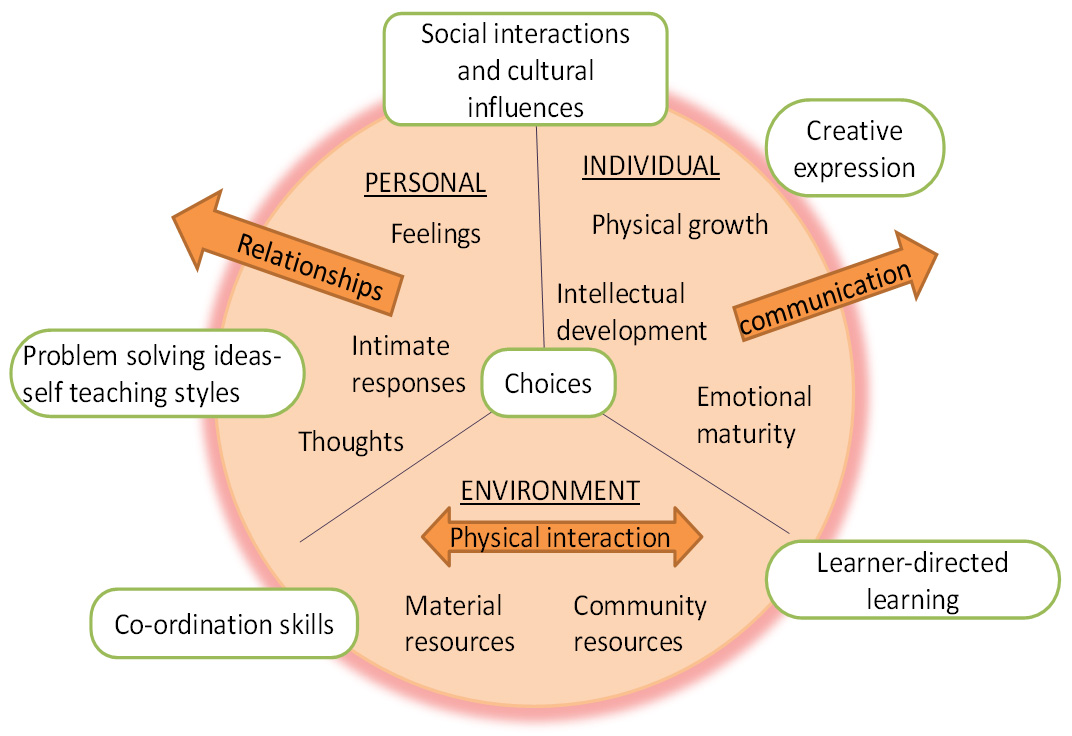
The Reggio environment appears to encourage everyone to feel comfortable with the unpredictable. This also supports personal investigation, discovery, shared learning experiences, and respects the children’s need to revisit their learning experience and create continuity within a broad spectrum of flexibility and movements of change. (Early Childhood,2005:19&14)
Motivation
During the early years motivation appears to be initiated by ‘curiosity, wonder and enthusiasm.’(Katz,Cesarone Ed.,1994:50) This initiates further development as illustrated in the author’s chart below, where each stage incorporates an integration of the previous stages. The chart also illustrates the inter-dependence between motivation and the development of complex thinking within children’s creative play.
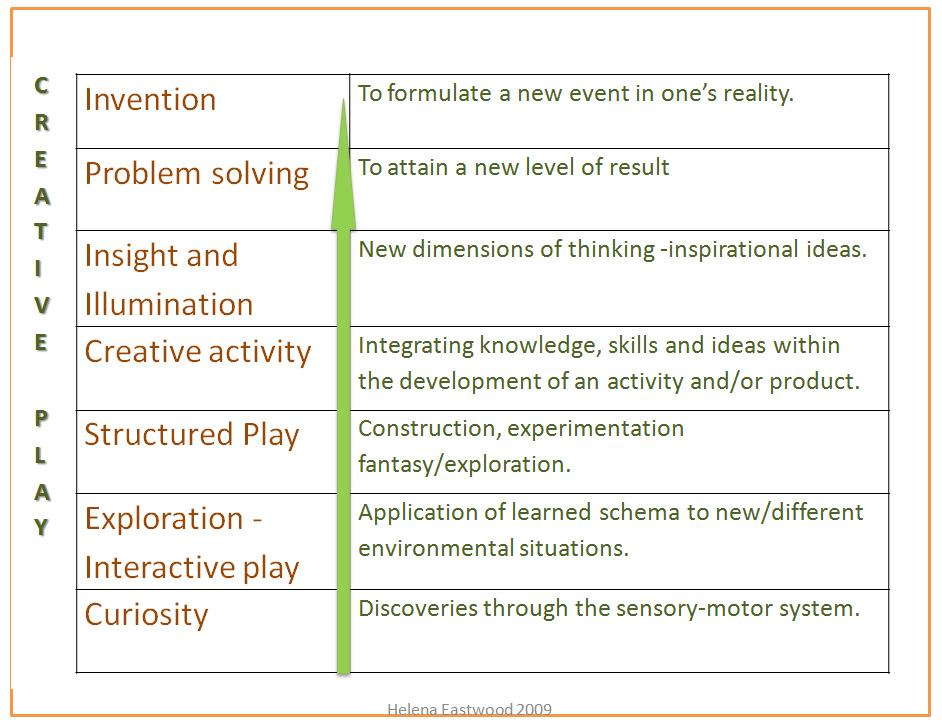
‘....describing the hundred languages of expression, Malaguzzi recognized all the many different ways in which children interpret the world and represent their ideas and theories.’ (Thornton &Brunton 2005:9)
Thinking Processes
This chart presents inter-related aspects that contribute to the development of inner courage, confidence, enthusiasm and a joyful disposition also appear to influence children’sconnections between ideas and things - a “divergent thought” that strays from any kind of coding - belonging strictly to the method of procedure in the consciousness of all children.’ (Reggio Children2001:57)
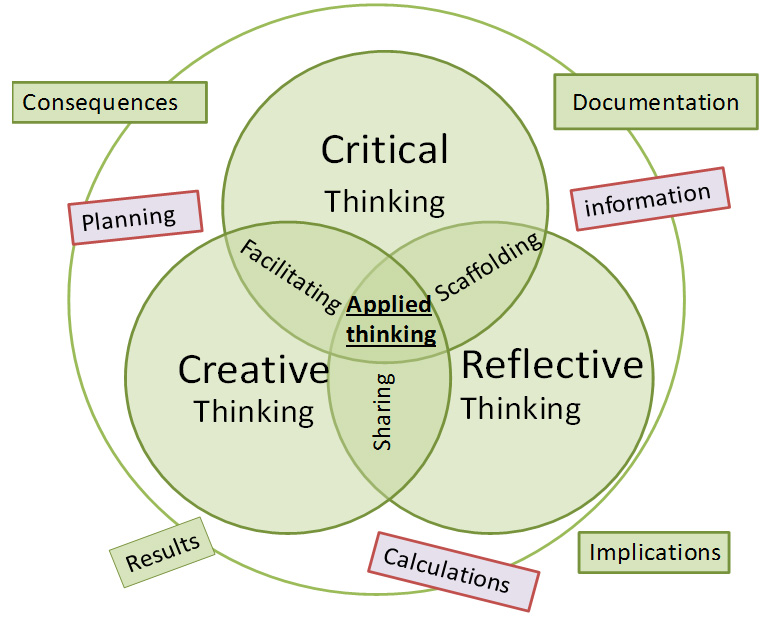
Creativity in the sense of the ability to produce ideas or new things but also to find new connections between ideas and things - a “divergent thought” that strays from a any kind of coding - belonging strictly to the method of procedure in the consciousness of all children.’
(creativity related to divergent thinking as opposed to the aesthetics of our present and practical reality.)
Creativity in the sense of the ability to produce ideas or new things but also to find new
The topic/project approach encourages each child to creatively design his/her own learning style and expression of creative activity. Where by individual attributes are combined in an infinite variety of activity initiated by the individuals chosen social and environmental relationships and ‘The complexities of Human Potential’illustrated by the author as follows:
Qualities associated with the Human Potential
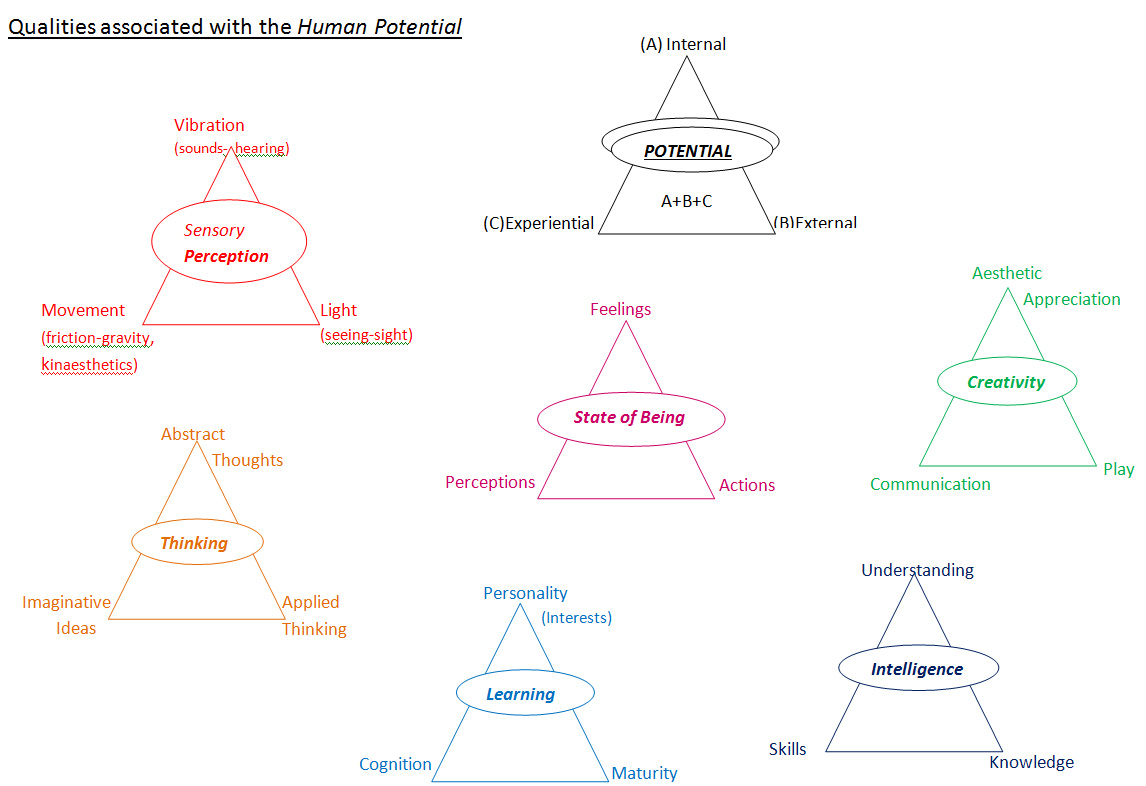
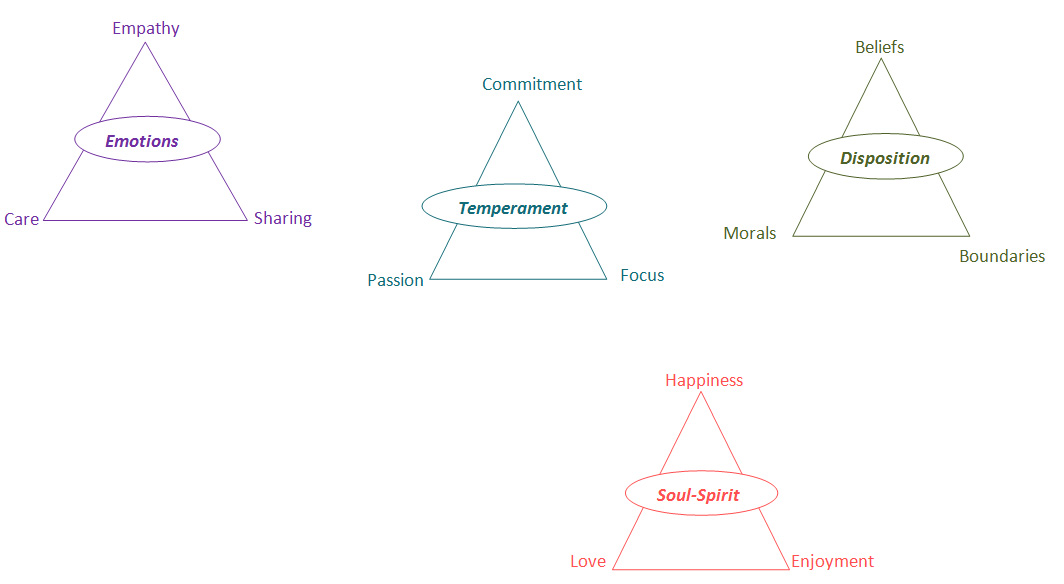
Conclusion
The adults in Reggio education work together with the children as a team and no one has a leadership status of superior authority and control. Warm respectfully collaboration on all levels of interaction encouragesan internal curriculum whereby strengths, personalities and perspectives can to come together, ‘often challenging each other to create a new perspective and knowledge’ alongside ‘ cognitive development through skills, knowledge, understanding and creativity while exploring an ‘excellence in early childhood education.’Authentic childhood p94-92’ [
The Reggio approach appears to have changed the premise of adults directing the children’s learning to one of scaffolding the children’s activities through environmental provisions and a collective theme of study combined with media documentation.
‘Interactions between children and either an adult or a child who is more confident act as scaffolding to nudge children to go beyond what they can achieve on their own.’ (Frazer, Gestwiki,Ed. 2002:66) .

Freedom within creative activity releases children from following
conventional thinking and structures of behaviour.
‘Frederica (age three) knows horses have four legs; she turns the piece of paper over and draws the other two legs on the reverse side’ (Rinaldi,2006:115) illustrating a cognitive level of expression bridging II and III dimensional creativity.
Encouraging open ended questions of enquiry.
‘In the shadow of the zebra can you see the white stripes or the black stripes better?’ (Reggio Children,2000:89)
Reggio teachers foster ‘the children’s competence by explicitly teaching techniques.’
One child was unable to successfully use a wire cutting tool, silently the adult intervened to demonstrate. On this occasion the adult chose to provide a demonstration without any verbal commentary. (Lewin Benham,2006:16)
Supporting child-directed learning through an emergent curriculum of child initiated topics Reggio educators seem to be comprehensively relating Creativity to ‘the art of teaching’(Steiner,1982)within the Zone of Proximal Development.(Vygotsky citedin Frazer, Gestwiki,Ed. 2002:66)
However, the author suggests that it is still the quality of adult intention that can influence the child’s development within the context of an evaluation and interpretation of the child’s world of passion, doing and well being. The adult’s internal assessment and integration of external and internal changes may thereby be related to the children’s playful inferences, implications, and subtle accommodation of adult judgments and values. Areas of concern could be considered within the controlling qualities of directing the children’s learning into an imposition disguised as a problem solving quest and/or unnatural levels of stimulus entertainment, presented as enrichment through an environmental impact artificially imported by the adults.
However, the Reggio environment appears to encourage personal investigation, discovery, and shared learning experiences, and respects the children’s need to revisit their learning experience and create continuity within a broad spectrum of flexibility and creative activity. (Early Childhood,2005:19&14)
It would appear that the Reggio schools have brought some degree of harmony to the seemingly polarised distinctions between child-initiated and adult-initiated curriculum, through a community approach where adults and children share an open ended topic style of progressive curriculum based on natural creativity and personal enquiry.
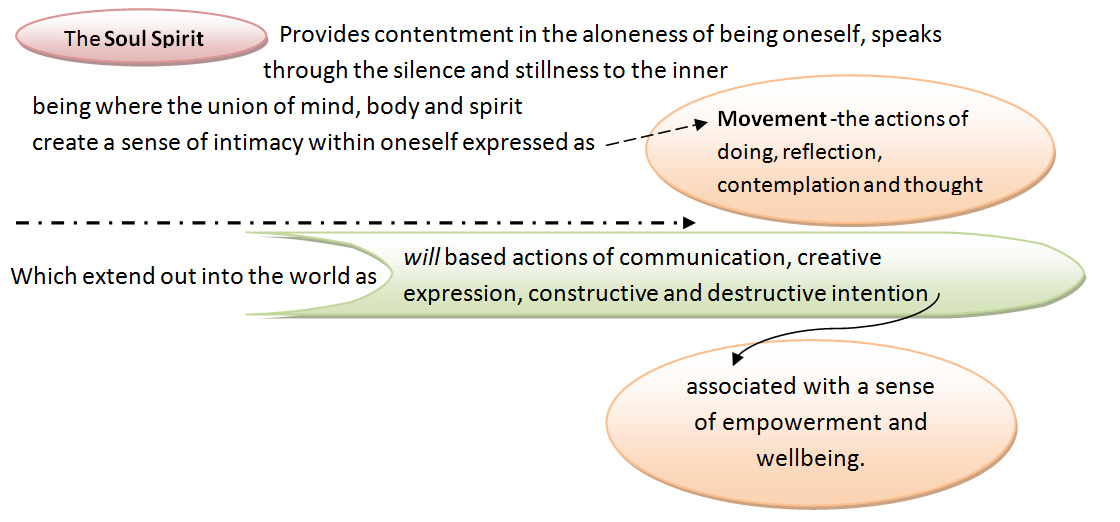
In the following chart the authorrelatesearly year’s development in three consecutive stages. Steiner, Montessori and Piaget present a strong differentiation between each stage, presented in the consecutive columns in the chart below. Whereas the Reggio approach appears to be successfully accommodating within the 3-6 years what is described above in the 6+ stage
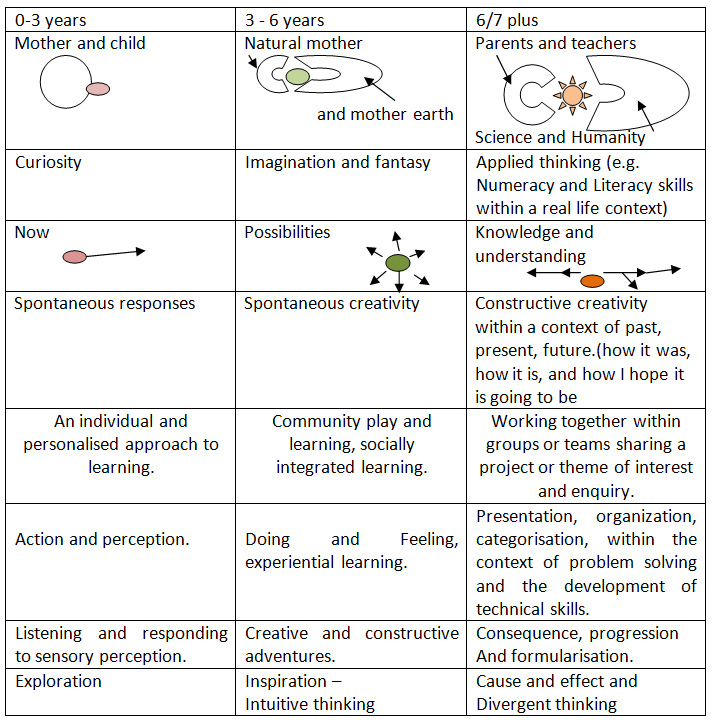
Steiner, Montessori and Piaget - Early Year’s Development
The success of the Reggio approach could be questioned in the light of the Steiner and Montessori pedagogy that present the more formal and academic approaches to learning, particularly studies of natural phenomena and associated sciences, should only begin after the age of six years. Whereby, the early years are held as a time of deep reverence and sensitivity to feelings and creative experiences as opposed to academic skills, worldly knowledge,ability and independence.
Areas of cautionary concern for both the adults and the children appear to be:-
- integrating freedom with a responsibility for safety;
- encouraging independence and self help without compromising standards of hygiene and healthcare;
- and inspiring personal confidence and authenticity,such that, unhealthy submission of an individual to a collective (ora collective to an individual) is minimised.
The adults’ authoritative role as carer does not appear to have any preconceived specification.The Reggio stafforganically relate to their own standards from their own personal knowledge of the children’s individual needs, and associated perspectives on safety and subsequent presentation of boundaries.Reggio specifically addresses freedom, liberation and democracy within education as one of relationships combined with a commitment to deep and openhearted participation, whilst embracingnecessity and freedom, creativity and reflection, relationships and communicationrather than a preconceived structure of rules,.
‘.....a real school is one where each person who operates in it, stimulates and invites each of the small young individuals to express their freedom: I believe that this is the great horizon of education.’ (Masullo cited in Edizoni,Ed.2006:35)
In 1947 a small community of villagers successfully began their dream to change their young children’s education in the hope of creating a better world for everyone. The first Reggio school has seeded much thinking and change within the realms of children’s care and education. Many other Reggio schools have been established since the first in 1947, each one a unique example of a passion for living and learning together. Hopefully, this influence will continue to flourish all over the world and support new perspectives on the roles of parent, carer and educator, within the widest context of culture, prosperity and religion and thereby empower children of all ages and ability to create their future happiness.
Conclusion
The essence of Reggio approach is summarised by the author in the chart below:-
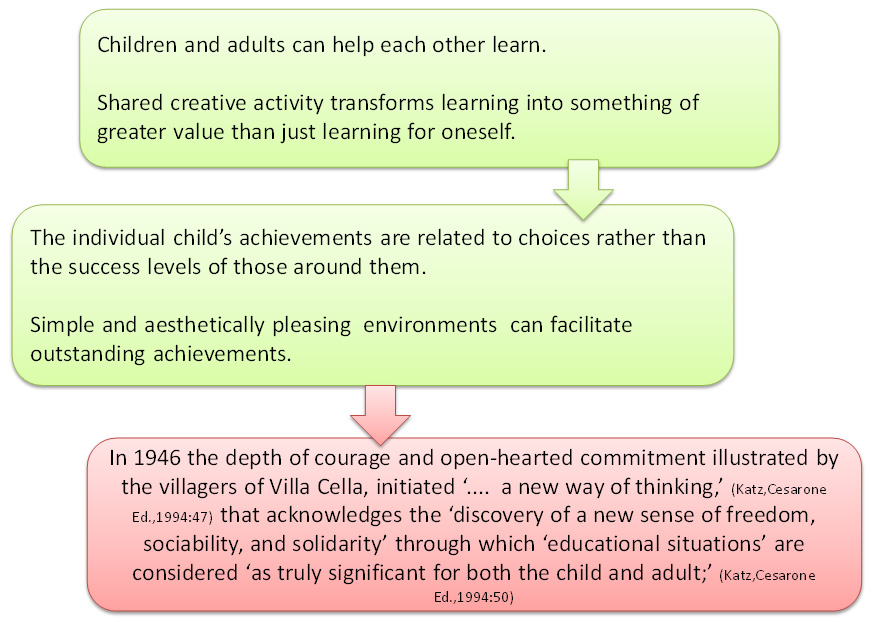
Reggio Emilia Bibliography
Abbot, L. &. Nutbrown, C. Experiencing Reggio Emilia: implications for the pre-school provision. Buckingham: Open University press, 2001.
Bancroft, S. Fawcett, M. Hay, P. 5x5x5 Researching Children Reseaching the World.Chippenham:5x5x5=Creativity, 2007.Barazzoni, B. Brick by Brick, English Ed. Reggio Emilia: Reggio Children, 2000.
Bernard, H.W. Psychology of Learning & Teaching. New York: McGraw-Hill,1965
Bruce, T. Cultivating creativity in babies toddlers and young children. London: Hodder & Stoughton, 2004.
Bruner, J. Beyond the Information Given, London: George, Allan & Unwin Ltd.,1974.
Ceppi, G. &Zini, M. Eds, Children, Spaces, Relations, Reggio Emilia: Reggio Children, 1998.
Curtis, D. & Carter, M. Learning Together with Young Children.St. Paul: Redleaf Press, 2008
De Bono, E. Teach Your Child How To Think. London: Viking, 1992.
De Bono, E. Six Thinking Hats. London: Penguin Book Ltd., 2000.
Duffy, B. Supporting Creativity and Imagination in the Early Years. London: Anvil Press, 1998.
Edizoni, J. Ed. Crossing Boundaries. Italy: Edizoni Junior, 2006
Edwards, C., Gandini,L. &Forman, G. 2nd Ed. The Hundred Languages of Children.London: Ablex Publishing, 1998.
Feeney, S. Galper, A. Seefeldt, C. Continuing Issues in Early Childhood Education 3rd Ed. Pearson Education: 2009.
Frazer, S. &Gestwicki C. Eds. Authentic childhood. Belmont: Delmar, 2002.
Gardner, H. Frames of Mind. Hammersmith: Fountain Press, 1993.
Gardner, C. H. &Kornhaber, M.A. & Wake, W.K. Intelligence: Multiple Perspectives, London: Harcourt Brace College Pub. 1996.
Gardner, H. Intelligence Reframed
Hellinger, B.With God in Mind.Hellinger Publications, 2007.
Horne, T. &Wootton, S. Teach Yourself – Train the Brain. Part 1. London: Hodder Education, 2007
Hughes, F.P. Children, Play and Development.Massechussetts: Allyn& Bacon, 1999.
Katz L. G. &Cesarone Eds. Reflections on the Reggio Emilia approach. Illinois: ERIC, 1994.
Lewin-Benham, A. Possible Schools, the Reggio Approach to Urban Education.London: Teachers College Press, 2006.
Macintyre, C. Enhancing Learning Through Play. London: David Fulton, 2001.
MacNaughton, G. & Williams, G. Teaching Young Children: choices in theory. Berkshire: Open University Press, 2004.
Manning, K. Structuring Play in the Early Years at School. London: Ward lock educational, 1977.
Meadows, S. The child as Thinker 2nd Ed. London: Routledge, 2006.
Megre, V. A Space of love.The Ringing Cedars Press, 2005.
Overall, L. Supporting Children’s Learning, a guide for teaching assistants. London: Sage, 2007.
Piaget, J. &Inhelder, B.The Psychology of the Child. London: Routledge & Kegan Paul. 1969.
Pollard, A. Reflective Teaching. London: Continuum, 2002.
Reggio Children of the Diana & Gulliver Preschools.Everything has a shadow except ants, 2nd Ed. Reggio Emilia: Reggio Children, 2000.
Reggio Children of the Fiastri and RodariMuniciple Preschools of Sant’llariod’Enza, The Future is a Lovely Day. Reggio Emilia: Reggio Children, 2001.
Reggio Children from the Diana School, ADVISORIES.Reggio Emilia: Reggio Children, 2002.
Rinaldi, C. In dialogue with Reggio Emilia. London: Routledge, 2006
Thornton, L. &Brunton, P. Understanding the Reggio Approach. London: David Fulton, 2005.
Williams, J. Promoting independent learning in the primary classroom. Buckingham: Open University Press, 2003.
Journals
Children in Europe. March 2004. Edinburgh: Children in Scotland, 2004.
Early Childhood. Folio 9:2005
Nursery World 5th Feb 2004
DVDs
Buzan, T.& Griffiths, C. The story of Mind Mapping.
Gilbert, P. Ed., 100 Voices – 5x5x5 Researching Children Researching the World. Bath: 5x5x5 Creativity n. d.
The school - Humanities new future- www. TEKOS.org Dreams Fulfilment LLC 2009
The Reggio Preschool Pedagogy
- In 1946 the villagers of Villa Cella, Reggio, Italy, sought to create a culturally progressive experience for their new generation of young children.
- The cooperative efforts of the working community, built and funded a specially designed nursery school for their children.
‘In every brick of “the people’s preschool” there was trust, awareness, willingness, and hope.’ (Barazzoni,2000:29)
- They wanted to restore the young children’s rights to choose for themselves and joyfully retain: their liberty, a love of learning & enthusiasm to participate with extreme creativity.
- They inspired Socialised Management, Democracy, Young children as Liberated Citizens.
- This ‘profound illustration of humanity’ founded ‘a culture and professionality’ (Barazzoni,2000:28) based on ‘the richness and concreteness’ (Reggio Children,2000:9) of children’s ‘ideas, theories, questions and opinions’. (Katz,Cesarone,1994:25)
A ‘creative and reflective pedagogy’ (Bancroft,2007:5)
of listening and relationships. (Abbot,Nutbrown,2001:128)
The roles of the Reggio teachers

A pedagogy imbued with open-hearted authenticity ‘.......the activity of making projects conceived as functional interaction between needs, resources, conditions, knowledge and method.’ (Reggio Children 2001:56)
Reggio teachers feel it is important to focus on beauty, art and aesthetic value.

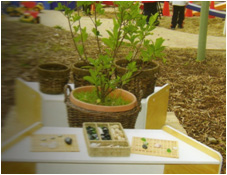

‘the attention to detail and beauty’ ‘foster the children’s aesthetic sense’ and illustrates ‘an “amiable” environment where relationships can flourish.’ (Frazer, Gestwiki,Ed. 2002:89)
Children are endowed with ‘genius, talent and creativity.....So to awaken his genius, you need to open his heart, remove complexes, tension and fear.’
The more traditional issues have been transformed into :-
 How well the teacher can listen to what and how the children want to learn and achieve, feeling comfortable with unpredictable activity and creative styles of communication.
How well the teacher can listen to what and how the children want to learn and achieve, feeling comfortable with unpredictable activity and creative styles of communication.
Successful scaffolding within the Zone of Proximal Development (Vygotsky) where the ‘emphasis is on relationship and reciprocity and the outcome emerges as it unfolds.’ (Frazer, Gestwiki,Ed. 2002:86)
 How to embrace changes and integrate personal experience with the unique specialness of child initiated learning.
How to embrace changes and integrate personal experience with the unique specialness of child initiated learning.
Facilitating an inherently open-ended learning environment.
 An Emergent Curriculum - children working at their own natural pace developing their own style and method for learning.
An Emergent Curriculum - children working at their own natural pace developing their own style and method for learning.
Sharing of ideas & possibilities without an attachment to a preconceived result.
Consideration of what others think - the child, the adult and the other children.
Examples of Working Practice:-
Sometimes the adults do not interrupt or disturb the children.
‘.......two little girls spent 3 hours or so playing together with a collection
of red and pink glass objects displayed on a lighter box.’
(Abbot,Nutbrown,2001:69)
The adults facilitate specially designed environmental support. 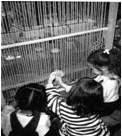
‘......children sometimes need to ‘flit’. (Abbot,Nutbrown,2001:69)
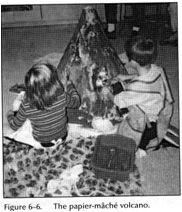 ‘...the initial observation of the idea warms up’ the children’s and the Adults’ ‘awareness of what could be done.’ (Frazer, Gestwiki,Ed. 2002:177)
‘...the initial observation of the idea warms up’ the children’s and the Adults’ ‘awareness of what could be done.’ (Frazer, Gestwiki,Ed. 2002:177)
When the children wanted to make their paper-mache mountain into a volcano the assisting adults helped the children investigate things that would safely explode in the classroom.’
(Frazer, Gestwiki,Ed. 2002:143)
‘Interactions between children and either an adult or a child who is more confident act as scaffolding to nudge children to go beyond what they can achieve on their own.’ (Frazer, Gestwiki,Ed. 2002:66) .

Freedom within creative activity releases children from following
conventional thinking and structures of behaviour.
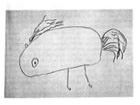 ‘Frederica (age three) knows horses have four legs; she turns the piece of paper over and draws the other two legs on the reverse side’ (Rinaldi,2006:115) illustrating a cognitive level of expression bridging II and III dimensional creativity.
‘Frederica (age three) knows horses have four legs; she turns the piece of paper over and draws the other two legs on the reverse side’ (Rinaldi,2006:115) illustrating a cognitive level of expression bridging II and III dimensional creativity.
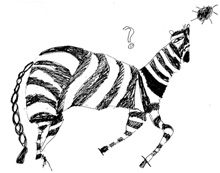 Encouraging open ended questions of enquiry.
Encouraging open ended questions of enquiry.
‘In the shadow of the zebra can you see the white stripes
or the black stripes better?’ (Reggio Children,2000:89)
Reggio teachers foster ‘the children’s competence by explicitly teaching techniques.’
One child was unable to successfully use a wire cutting tool, silently the adult intervened to demonstrate. On this occasion the adult chose to provide a demonstration without any verbal commentary. (Lewin Benham,2006:16)
Adults sharing personal knowledge and experience through their wider access to resources,
The children built a cityscape right underneath the pictures of
the tall buildings.
Another teacher added a mirrored platform ...... (Frazer, Gestwiki,Ed. 2002:205)
Inappropriate adult input can be ignored
The teachers hypothesized that a possible next path might be birds, so they brought in branches, nests and little bird figures.
‘But continued careful attention to the play convinced them that this was not the direction to pursue.......the play was still about being tall, being up high’ (Frazer, Gestwiki,Ed. 2002:205)
Extending investigation into the community. Emergent, open ended, ‘child initiated, adult framed’. (100 Voices: DVD)
A visit to a water tower in a nearby city park facilitated III dimensional creative work
Freedom of time and space and use of materials for difficult and challenging projects that may or may not be successfully completed.
Using clay the children began to build the water tower brick by brick, the children were really motivated ‘ ...co-constructing as group members learning from one another’ (Frazer, Gestwiki,Ed. 2002:94)
Integrating II and III dimensional representation as they built, they compared their sketches and referred to the drawings like blueprints. (Frazer, Gestwiki,Ed. 2002:207)
Very special worldly experience.
Going to see the space needle.
‘They took the elevator up and experienced real height and different perspectives.’ (Frazer, Gestwiki,Ed. 2002:204-207)
The environment ‘acts as the third teacher’. (Frazer, Gestwiki,Ed. 2002:99)
Parents can provide profound, timely and appropriate support.
The perfect ending was provided when a parent invited the class to the building downtown where he worked.
Building a pyramid of related experiences.
It was one of the tallest buildings in Seattle, looking down on both the water tower and the space needle. (Frazer, Gestwiki,Ed. 2002:208)
The emergent curriculum within The Height Project illustrates
‘....our need as individuals and as a society to engage in a co-operative learning adventure with others, both children and adults.’ (Katz,Cesarone,Ed.,1994:36)
‘Giovanni’s 3-dimentional construction ‘The Mountains of Past and Future’
‘The 100 languages of children’ help children communicate creative thinking skills that are beyond their level of verbal communication.

A Child Initiated Emergent Curriculum
An ‘exploration of excellence in early childhood education.’
Working together as a team respectfully collaborating on all levels of interaction, (Frazer, Gestwiki,Ed. 2002:92)
...addressing the day to day quality of children’s lives’ (Katz,Cesarone,1994:17)

The teacher is called to structure the educational experience primarily as it evolves.......... capture those vital and significant events, as they appear ...(Reggio Children,2000:8) consolidated, unify and empower child-initiated learning through a commitment to ‘developmentally appropriate practices’ (Katz,Cesarone,1994:17) moulded into the very foundations of a community based child centred approach.
The Reggio approach appears to promote and justify a philosophy that:-

Rudolf Steiner Born Austria / Hungary Border 1861 – 1925
- A ‘typical country boy’ whose father was the village stationmaster.
- At 18 attended Technical University Vienna
- Interested in Goethe’s: theory of colour; the interplay between the material and spiritual worlds.
- 1884-1890 Outstanding success tutoring Otto, ineducable due to his hydrocephalic condition.
- 1913 Designs and builds the Goetheanum building and initiates the Steiner Anthroposophical Society.
- 1914 Organises a school for children at the cigarette factory in Stuttgart.
- 1919 Steiner was lecturing intensively throughout the continent on issues based on his ‘three fold social order’ and ‘cultural deprivation’.
Maria Montessori Born in Ancona, Italy. 1870 -1952
- First girl to attended a ‘boys technical school’ and become an engineer.
- In 1896: first woman in Italy to qualify as a Doctor of Medicine.
- In 1899-1901: director of the Orthophrenic school for ‘mentally disabled children’.
- Montessori studied the work of Jean Itard’s and Edouard Seguin,
- 1904 was appointed Professor of Pedagogic Anthropology at Rome University
- In 1906: Casa dei Bambini a school for fifty children from the San Lorenzo slum in Rome.
- Later classroom with a glass wall at the International Exposition in San Francisco. Montessori schools and societies in USA, Europe and India.
Freedom to play - child directed learning
- Motivation Perception
- Creative activity Comprehension
- Curiosity Memory
- Exploration & experimentation
- Social interaction
- Concentration (focus and attention)
- Perseverance (repetition and patience)
- Intellectual interest (curiosity and investigation)
- knowledge (zealous conservation of all objects)
- Aspiration to know, love and serve.
(Montessori, 1988: 197-201)
MONTESSORI objectives
- Love of order
- Love of work
- Attachment to reality
- Love of silence and working alone
- Obedience
- A power to act from real choice
- Independence and initiative
- Self-discipline
- Joy
- Cooperation with peers
Riley’s description of Montessori objectives (Riley,2003:21-22)
STEINER ethos
- Love of nature and aesthetic creativity
- Love of purposeful activity
- Attachment to pattern and rhythm
- Love of singing, music and movement
- Loyalty and desire to please
- A power to act from personal choice
- Self-directed learning through play
- Self-discipline
- Passion for creativity
- Learning together
The aesthetic need for beauty, order, symmetry, and completion. ’It appears only in some mature individuals, but is frequently seen in healthy children.’ (Bernard,1965:243 Citing Maslow’s ‘order of needs’6th)
Love of order
Montessori describes the young child’s need for order and stability as a genuine necessity because he is ‘constructing himself out of the elements of the environment‘
The child ‘is striving incessantly to bring this bewildering universe, as he knows it, into some sort of order’ (Standing,1962:126 (Montessori,1966:41;L.M.C,1982:13-14)
Love of nature and aesthetics
Biodynamic gardening, growing and harvesting activities.
Natural environments nurture the child’s soul and spirit.
....when stating that we wish to educate the heart of the child and not only his intellect , we should ask ourselves how best we can meet this challenge.(Steiner,1988:24)
‘The law of nature is order and when order comes of itself, we know that we have re- entered the order of the universe.’ (Montessori,1998:261)

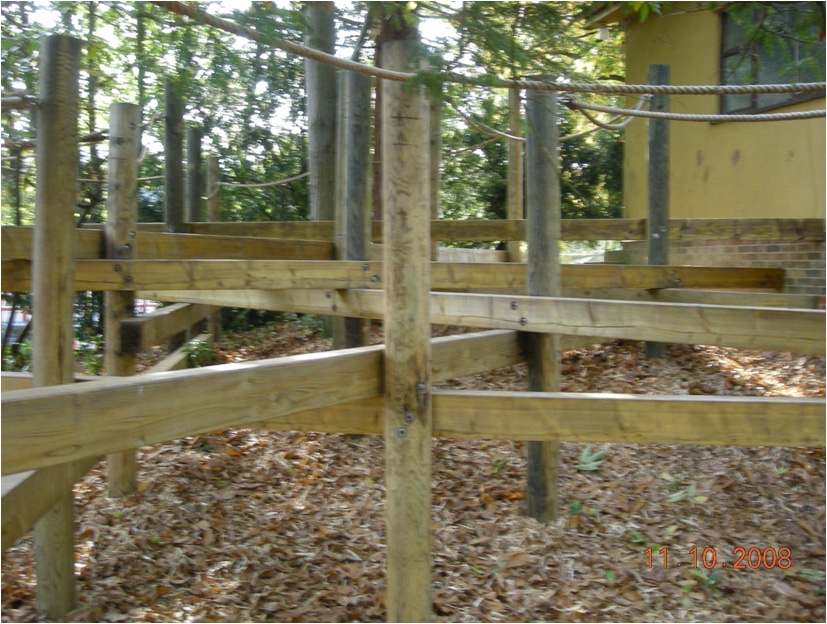
Love of work
Young children have critical learning periods that initiate learning behaviour. Montessori defines these ‘sensitive periods’ as: order; senses; language; walking; small objects; and social aspects of life.
Successful completion of tasks will normalise a child’s powers of concentration, intelligence and self-discipline during this early formative period.
This love for his environment makes the child treat it with great care and handle everything in it with the utmost delicacy.’ (Monssori, 1988:200)
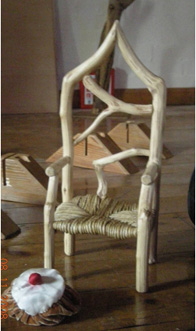
Love of creative activity
Natural rhythms and sensorial experiences from daily life
Inner spiritual forces facilitate that the child’s imitative response is an entirely individual artistic impulses unfolding their own soul activity.
‘The art of education must proceed from life itself and not from abstract scientific thought’ (Steiner, 1988:5)
and we must protect the child from being absorbed too strongly or too rapidly by the outer world.(Steiner,1982:29,46,47)
From approximately 3 to 7, the child is consciously developing optimum levels of physical sensory-motor differentiation, learning through imitation, and an open hearted willingness to please.
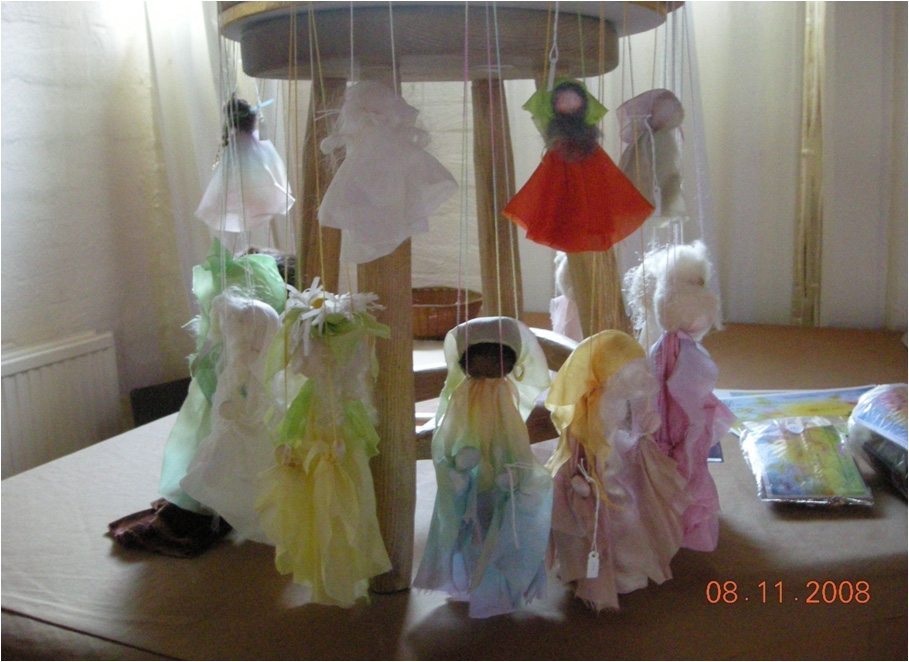

‘And so the task of a kindergarten teacher is to adjust work taken from daily life so that it becomes suitable for the children’s play activities.’ (Steiner,1988:81)
Attachment to reality
Unity of the soul and body is expressed through ‘voluntary effort under the conscious direction of the mind‘, which emanates as a ‘perfection that is individual and personal ‘ (Standing,1962:212)
Freedom to choose how, when and with whom they ‘work’ without any directed length of time.
Attachment to pattern and rhythm
A child’s learning is facilitated by the teacher’s presentation of rhythmic activities and routines
The child learns through his sense of feeling which is perceived within the bodies ‘rhythmic system’(Steiner,1982:37)
Providing the opportunity to ‘imitate life in a simple and wholesome way.’ (Steiner,1988:81)
Love of silence and working alone
‘This intellectual possessiveness shows itself when the child is so strongly attracted by his environment that we may almost say he is ‘in love’ with it.’ (Montessori, 1988:200)
Silence predisposes the soul for certain inner experiences. “ You are not the same after the silence as you were before it.”
(Standing, 1962:226)
Love of singing, music, drama movement and dance
Aesthetic and artistic experiences appear to be strongly influenced by the social aspects of music making, singing and live storytelling and associated theatrical presentation.
Steiner’s ethos is to present an environment that nourishes the child’s imagination and nurtures his artistic creativity throughout the curriculum.
Steiner suggests that what comes from the environment inwardly influences ‘the orientation of a person’s thought life’ (Steiner,1988:37)
Bernard presents that when ‘one is most unlovable, he is most in need of love.’(1965:247)
Obedience
The child finds independence through organised learning.
Mutual appreciation and respect between teacher and children
Montessori the teacher the directress. However, this does not imply that she wishes the children to copy her actions or that she is there to correct a child if he does something wrong.
Loyalty and desire to please
The child is entirely given over to subconscious wisdom, has a natural disposition to intuitively comprehend and integrate all his sensory experiences
and naturally absorbs the inherent moral and cultural influences. (Steiner,1988:76)
Mutual admiration and respect for the guardianship role of the teacher
When the teacher can relate to the individual soul nature of each child, she will gain powerful feelings of support ‘for teaching and educating the child lovingly’ and the children will respond with ‘loyal affection and devotion’(Steiner,1982:58 &60).
Child’s describes Steiner’s ethos as ‘Imbue thyself with the power of imagination’.... ‘Have courage for the truth’..and.... ‘Sharpen thy feeling for responsibility of soul.’ (Childs,1995: 61)
A power to act from real choice
Montessori presents that the children should be free to move about and express themselves spontaneously within the classroom throughout the day, and that this helps the children learn ‘active discipline’ through their own inner mastery of themselves.
A power to act from personal choice
Steiner kindergarten teachers focus on a joyful and child centred approach,
where reconceived goals, plans, gains and ideas are secondary to the primary whole hearted celebration of creative living and spontaneous doing;
where control of error has no place beyond practical applications related to the process of play, and learning is a ‘wholly organic’ process. (Steiner,1982:34)
The importance of imitation for the child during the early years. Unlike copying, imitation intrinsically involves the child’s desire to initiate a sensory experience, ‘enacted in deep earnest by the child in its play’ (Steiner,1988:80)
When the child’s freedom can be directed by the teacher’s careful preparation and organisation of the environment
Independence and initiative
Play is a child’s ‘work’
Montessori emphasized the concrete aspects of living and doing.
She provided specialized concrete didactic apparatus with a structural control of error.
This equipment encouraged detailed sensory discrimination of size, shape, colour and shade, smell, sounds, musical tones and semi-tones.
Child-directed learning through play
Play is a natural inborn impulse
The Steiner Kindergarten provides natural and undefined materials which are considered supportive to free play and natural flowing creativity.
Which gives wide experiences and extensive opportunity for personal expression and intuitive exploration; thus expanding the learning experience beyond that which would have been gained by learning to perform a pre-structured activity and engage in consciously organized intellectual thinking.
Self-discipline
‘Without concentration it is the objects about him which possess the child.....But once his attention has been focused, he becomes his own master and can exert control over his world.’
Following the development of concentration comes perseverance when repetition consolidates the child’s ’ability to carry through what he has begun.’ (Montessori,1988:197-198.)
Self-discipline
Steiner presents that it is the enactment of the child’s will rather than intellect that formulates the child’s early learning.
Steiner suggests there is minimal need for correction at this age
because the children’s own desires and sense of aesthetic appreciation will facilitate assessment of results and of rhythms of routine, order and tidiness.
Both Montessori and Steiner encourage that boundaries should be presented in a way that is perceived as helpful to all rather than disciplinary action focused on a specific individual and/or their chosen activity.
Such that the abstract can be expressed and the concrete can be felt.
Joy
With the freedom to follow his own inner forces, the child will focus his attention not on things themselves, but on ‘the knowledge he derives from them.......
..... the child does not act from logic, he acts by nature.’ (Montessori, 1988:199)
Passionate enthusiasm
Steiner presents that it is the enactment of the child’s will rather than intellect that formulates the child’s early learning.
‘The child wants to be active simply out of an inborn and natural impulse. Play activity streams outward from within.’(Steiner, 1988:80)
‘.......factors essential for the future development of humankind are bringing to wider consciousness the knowledge that the human being is essentially spiritual in nature, and as such has spiritual needs,’ (Childs,1995:34)
Bernard when citing Maslow presents that ‘...when pupils feel that they are part of a group, desirable and purposeful learning activities are facilitated.’ (Bernard,1965:248)
Cooperation with peers
Individuals working together as a team, caring and supporting each other
Montessori suggests that children have a natural ability to relate to social behaviour objectively, together with the virtue of patience and a sense of morality that is founded in their desire for harmony.
Sharing and learning together
A specified group of children sharing as a small community with its own ‘home base’ The child is entirely given over to subconscious wisdom and has a natural disposition to intuitively comprehend and integrate all his sensory experiences and naturally absorbs the inherent moral and cultural influences. (Steiner,1988:76)
Rudolf Steiner Born Austria / Hungary border:1861 – 1925
- A ‘typical country boy’ whose father was the village stationmaster.
- At 18 attended Vienna Technical University
- Interested in Goethe’s: theory of colour; the interplay between the material and spiritual worlds.
- 1884-1890 Outstanding success tutoring Otto, ineducable due to his hydrocephalic condition.
- 1913 Designs and builds the Goetheanum building and initiates the Steiner Anthroposophical Society.
- 1914 Organises a school for children at the cigarette factory in Stuttgart.
- 1919 Steiner was lecturing intensively throughout the continent on issues based on his ‘three fold social order’ and ‘cultural deprivation’.
Maria Montessori Born in Ancona, Italy.: 1870 -1952
- First girl to attended a ‘boys technical school’ and become an engineer.
- In 1896: first woman in Italy to qualify as a Doctor of Medicine.
- In 1899-1901: director of the Orthophrenic school for ‘mentally disabled children’.
- Montessori studied the work of Jean Itard’s and Edouard Seguin,
- 1904 was appointed Professor of Pedagogic Anthropology at Rome University
- In 1906: Casa dei Bambini a school for fifty children from the San Lorenzo slum in Rome.
- Later classroom with a glass wall at the International Exposition in San Francisco.
- Montessori schools and societies in USA, Europe and India.
